
Day 14, Thursday 13 April - Ubon Ratchathani
Happy Songkran....... Whatever happens today I will have achieved far more than I expected but of course there will always be gaps to fill. Today is Songkran, Thai traditional New Year and I expect a lot of water to be thrown about. In keeping with the festive mood there will be far less traveling for us today and we opt for a later start. We begin in the town of Phibun where we arrived yesterday.
Wat Phu Khao Kaeo....... Wat Phu Khao Kaeo is located on a small hill south of the town. The temple is known for its intricate glazed ceramic exterior and guardians. The rooftop was made in golden pavilion style decorated with Thai pattern and Indian-style pillars. The history of important Buddha relics can be found on the ceilings. Downstairs, the space is used as a pavilion.
Kaeng Saphue....... Kaeng Saphue is a public park in Phibun beside the Mun River. Normally a peaceful place, today things could not be more different, and the park is quite crowded in keeping with the spirit of Songkran with sections of the river marked as places to bathe. Of course, there are dozens of street sellers distributing all kinds of food, snacks and drinks. A sensible thing to do under the circumstances is to lay out a blanket wherever there is space and enjoy a picnic along with the celebrations. We manage to stay long enough to buy some snacks and get a flavour of what Songkran means to Thai people. It's time to leave Phibun and head for Ubon Ratchathani less than an hour away.
Misunderstanding....... As we near the city my partner directs me to locate a temple in Warin Chamrap sub-district of the city but when we arrive, I see nothing obvious to photograph and no information I can work with, so I wait for her outside what appears to be a simple office building. It would have been better if I was forewarned as it's only later, I would understand this location's significance.
Wat Nong Pa Phong....... Wat Nong Pah Pong (generally shortened to Wat Pah Pong) is a Theravāda Buddhist monastery in Warin Chamrap. It was established by the late Ajahn Chah as the main monastery of the Thai Forest Tradition. In 1975, one of Ajahn Chah's first Western disciples, Ajahn Sumedho, opened what was to be the first in a long line of branch monasteries (currently around 240 branches) of Wat Nong Pah Pong specifically geared towards the growing interest in traditional Buddhist practices among Westerners. The Thai monastery Wat Pah Nanachat, along with a growing list of monasteries, opened in recent years around the world, are introducing the heart of the Buddhist teachings to what was previously something of an inaccessible audience to the Thai Forest masters.
Well, the connection with Westerners is interesting but for me I'm off to a location I better understand.
Ubon Ratchathani Railway Station....... In the past I've been guilty of referring to Ubon Ratchathani Railway Station as Warin Chamrap Railway Station as it's located in Warin Chamrap sub-district. It seems that engineers built the terminus here to avoid crossing the Mun River. However, the inconvenience is only minor as the road bridge connecting to the city is close by. As a terminus there should be locomotives in the depot awaiting their turn to haul overnight trains back to Bangkok. With no upgrades planned for the near future, I'm free to wander along the road to the depot with the reward of new engine sightings.
Much Improved....... Now as we're within easy reach of the city we might as well find accommodation rather than wait till later. While Katoon keeps an eye out for something suitable, I manage to find Wish Hotel online. It looks modern and more what we are used to and we're soon there enquiring still early in the afternoon.
Since we first arrived in Ubon Ratchathani province day by day the quality of accommodation has improved steadily. The comfort at Wish Hotel is up another level with no complaints just that for the standard of the room, why is the bathroom so small? A period of rest follows but we're soon up for a trip around the city and ticking off attractions.
Wat Phra That Nong Bua....... Wat Phra That Nong Bua is Ubon Ratchathani’s best known tourist attraction and one of three temples in Thailand with a chedi tower modelled on the one at the Mahabodhi Temple in Bodh Gaya in India. The centre piece of the newer version of the Mahabodhi Temple is a distinctive 55-metre-tall pyramid shaped tower, with elaborate carvings telling the story of the life of the Lord Buddha. The tower at the Mahabodhi Temple is considered to have inspired the design of many later religious monuments for both Hindus and Buddhists across the world, and the Mahabodhi Temple tower is one of the most copied religious buildings on the planet.
Wat Tai Phra Chao Yai Ong Tue....... Wat Tai (The temple of Phra Chao Ong Tue) is a Buddhist monastery situated on the bank of the Mun River. It was built in 1779. The significant ancient remains in the temple include a large statue of the Buddha locally named Phra Chao Ong Tue and two stone inscriptions. The Phra Chao Ong Buddha is the main image enshrined in the ordination hall (ubosot) and was built between 1534 and 1571. It is a bronze image in Subduing mara gesture. The word 'Tue' in northeastern Thai dialect means 'large and heavy' which perfectly describes the image. The Buddha's face is in traditional style.
The two inscriptions found here are made from different materials; one is made of teak and the other made of sandstone. The golden teak inscription looks like a Buddhist boundary marker (sema). It is inscribed with Isan characters on two sides, dating to 1830. The sandstone inscription, also similar in shape to a boundary marker, is inscribed with text mentioning that the pious monk Maharatchakru Putsitathammawongsa, donated a Buddhist scripture cabinet and supported the construction of the pagoda. This sandstone inscription dates to 1834.
The Buddhist monastery here at Wat Tai Toeng was gazetted by the Fine Arts Department as a national ancient site on September 27, 1936.
Wat Maha Wararam....... Wat Mahawanaram or Wat Pa Yai in Ubon Ratchathani City is an old temple that has the status of a royal temple. Inside the temple is enshrined Phra Chao Yai In Paeng, a Buddha image most revered by the people of Ubon Ratchathani. The beautiful Buddha image in subduing Mara posture was completed on the day of the full moon in the fifth lunar month according to the stone inscription in front of the Buddha image. This falls on a Sunday in April.
Tung Si Mueang....... Tung Si Mueang is a monument in the central square of the city with a soaring gold pillar and a temple within beautifully landscaped flower gardens & nearby night market.
City Pillar Shrine....... The city pillar shrine (san lak mueang) is located a short walk to the south of Tung Si Mueang and is next to the national museum. The pillar and its shrine are relatively modern, built in the early 1970s as part of a government campaign to have pillars in all provincial capitals. You'll find people making offerings, hoping for merit at almost any time of day. Historically these shrines were located where the first foundation stone of the city was laid.
At this point the light is fading but we're quite close to another religious site. However, when we arrive, we are greeted with only darkness.
Next Page.
Happy Songkran....... Whatever happens today I will have achieved far more than I expected but of course there will always be gaps to fill. Today is Songkran, Thai traditional New Year and I expect a lot of water to be thrown about. In keeping with the festive mood there will be far less traveling for us today and we opt for a later start. We begin in the town of Phibun where we arrived yesterday.
Wat Phu Khao Kaeo....... Wat Phu Khao Kaeo is located on a small hill south of the town. The temple is known for its intricate glazed ceramic exterior and guardians. The rooftop was made in golden pavilion style decorated with Thai pattern and Indian-style pillars. The history of important Buddha relics can be found on the ceilings. Downstairs, the space is used as a pavilion.
Kaeng Saphue....... Kaeng Saphue is a public park in Phibun beside the Mun River. Normally a peaceful place, today things could not be more different, and the park is quite crowded in keeping with the spirit of Songkran with sections of the river marked as places to bathe. Of course, there are dozens of street sellers distributing all kinds of food, snacks and drinks. A sensible thing to do under the circumstances is to lay out a blanket wherever there is space and enjoy a picnic along with the celebrations. We manage to stay long enough to buy some snacks and get a flavour of what Songkran means to Thai people. It's time to leave Phibun and head for Ubon Ratchathani less than an hour away.
Misunderstanding....... As we near the city my partner directs me to locate a temple in Warin Chamrap sub-district of the city but when we arrive, I see nothing obvious to photograph and no information I can work with, so I wait for her outside what appears to be a simple office building. It would have been better if I was forewarned as it's only later, I would understand this location's significance.
Wat Nong Pa Phong....... Wat Nong Pah Pong (generally shortened to Wat Pah Pong) is a Theravāda Buddhist monastery in Warin Chamrap. It was established by the late Ajahn Chah as the main monastery of the Thai Forest Tradition. In 1975, one of Ajahn Chah's first Western disciples, Ajahn Sumedho, opened what was to be the first in a long line of branch monasteries (currently around 240 branches) of Wat Nong Pah Pong specifically geared towards the growing interest in traditional Buddhist practices among Westerners. The Thai monastery Wat Pah Nanachat, along with a growing list of monasteries, opened in recent years around the world, are introducing the heart of the Buddhist teachings to what was previously something of an inaccessible audience to the Thai Forest masters.
Well, the connection with Westerners is interesting but for me I'm off to a location I better understand.
Ubon Ratchathani Railway Station....... In the past I've been guilty of referring to Ubon Ratchathani Railway Station as Warin Chamrap Railway Station as it's located in Warin Chamrap sub-district. It seems that engineers built the terminus here to avoid crossing the Mun River. However, the inconvenience is only minor as the road bridge connecting to the city is close by. As a terminus there should be locomotives in the depot awaiting their turn to haul overnight trains back to Bangkok. With no upgrades planned for the near future, I'm free to wander along the road to the depot with the reward of new engine sightings.
Much Improved....... Now as we're within easy reach of the city we might as well find accommodation rather than wait till later. While Katoon keeps an eye out for something suitable, I manage to find Wish Hotel online. It looks modern and more what we are used to and we're soon there enquiring still early in the afternoon.
Since we first arrived in Ubon Ratchathani province day by day the quality of accommodation has improved steadily. The comfort at Wish Hotel is up another level with no complaints just that for the standard of the room, why is the bathroom so small? A period of rest follows but we're soon up for a trip around the city and ticking off attractions.
Wat Phra That Nong Bua....... Wat Phra That Nong Bua is Ubon Ratchathani’s best known tourist attraction and one of three temples in Thailand with a chedi tower modelled on the one at the Mahabodhi Temple in Bodh Gaya in India. The centre piece of the newer version of the Mahabodhi Temple is a distinctive 55-metre-tall pyramid shaped tower, with elaborate carvings telling the story of the life of the Lord Buddha. The tower at the Mahabodhi Temple is considered to have inspired the design of many later religious monuments for both Hindus and Buddhists across the world, and the Mahabodhi Temple tower is one of the most copied religious buildings on the planet.
Wat Tai Phra Chao Yai Ong Tue....... Wat Tai (The temple of Phra Chao Ong Tue) is a Buddhist monastery situated on the bank of the Mun River. It was built in 1779. The significant ancient remains in the temple include a large statue of the Buddha locally named Phra Chao Ong Tue and two stone inscriptions. The Phra Chao Ong Buddha is the main image enshrined in the ordination hall (ubosot) and was built between 1534 and 1571. It is a bronze image in Subduing mara gesture. The word 'Tue' in northeastern Thai dialect means 'large and heavy' which perfectly describes the image. The Buddha's face is in traditional style.
The two inscriptions found here are made from different materials; one is made of teak and the other made of sandstone. The golden teak inscription looks like a Buddhist boundary marker (sema). It is inscribed with Isan characters on two sides, dating to 1830. The sandstone inscription, also similar in shape to a boundary marker, is inscribed with text mentioning that the pious monk Maharatchakru Putsitathammawongsa, donated a Buddhist scripture cabinet and supported the construction of the pagoda. This sandstone inscription dates to 1834.
The Buddhist monastery here at Wat Tai Toeng was gazetted by the Fine Arts Department as a national ancient site on September 27, 1936.
Wat Maha Wararam....... Wat Mahawanaram or Wat Pa Yai in Ubon Ratchathani City is an old temple that has the status of a royal temple. Inside the temple is enshrined Phra Chao Yai In Paeng, a Buddha image most revered by the people of Ubon Ratchathani. The beautiful Buddha image in subduing Mara posture was completed on the day of the full moon in the fifth lunar month according to the stone inscription in front of the Buddha image. This falls on a Sunday in April.
Tung Si Mueang....... Tung Si Mueang is a monument in the central square of the city with a soaring gold pillar and a temple within beautifully landscaped flower gardens & nearby night market.
City Pillar Shrine....... The city pillar shrine (san lak mueang) is located a short walk to the south of Tung Si Mueang and is next to the national museum. The pillar and its shrine are relatively modern, built in the early 1970s as part of a government campaign to have pillars in all provincial capitals. You'll find people making offerings, hoping for merit at almost any time of day. Historically these shrines were located where the first foundation stone of the city was laid.
At this point the light is fading but we're quite close to another religious site. However, when we arrive, we are greeted with only darkness.
Next Page.
Ubon Ratchathani Province
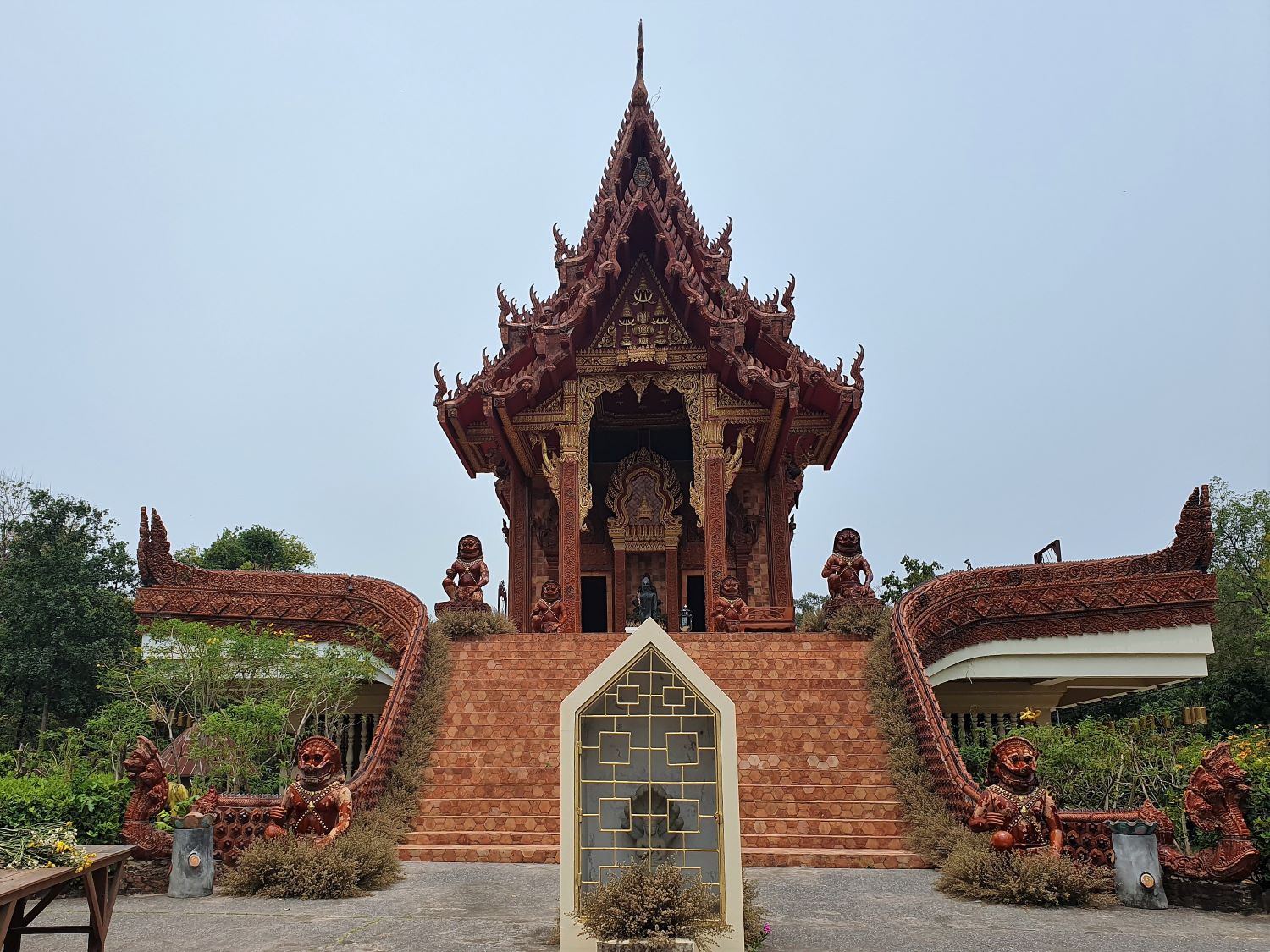
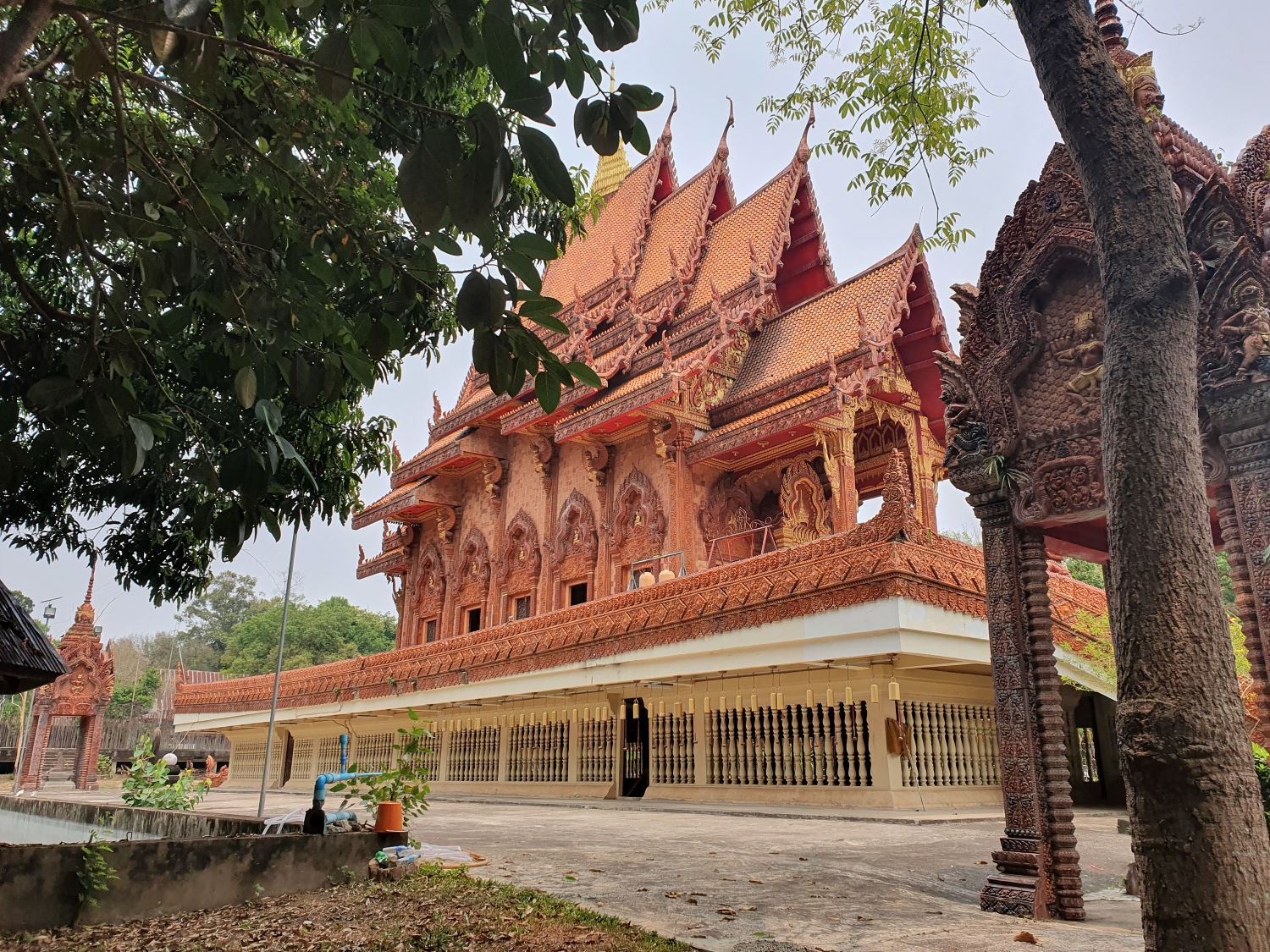
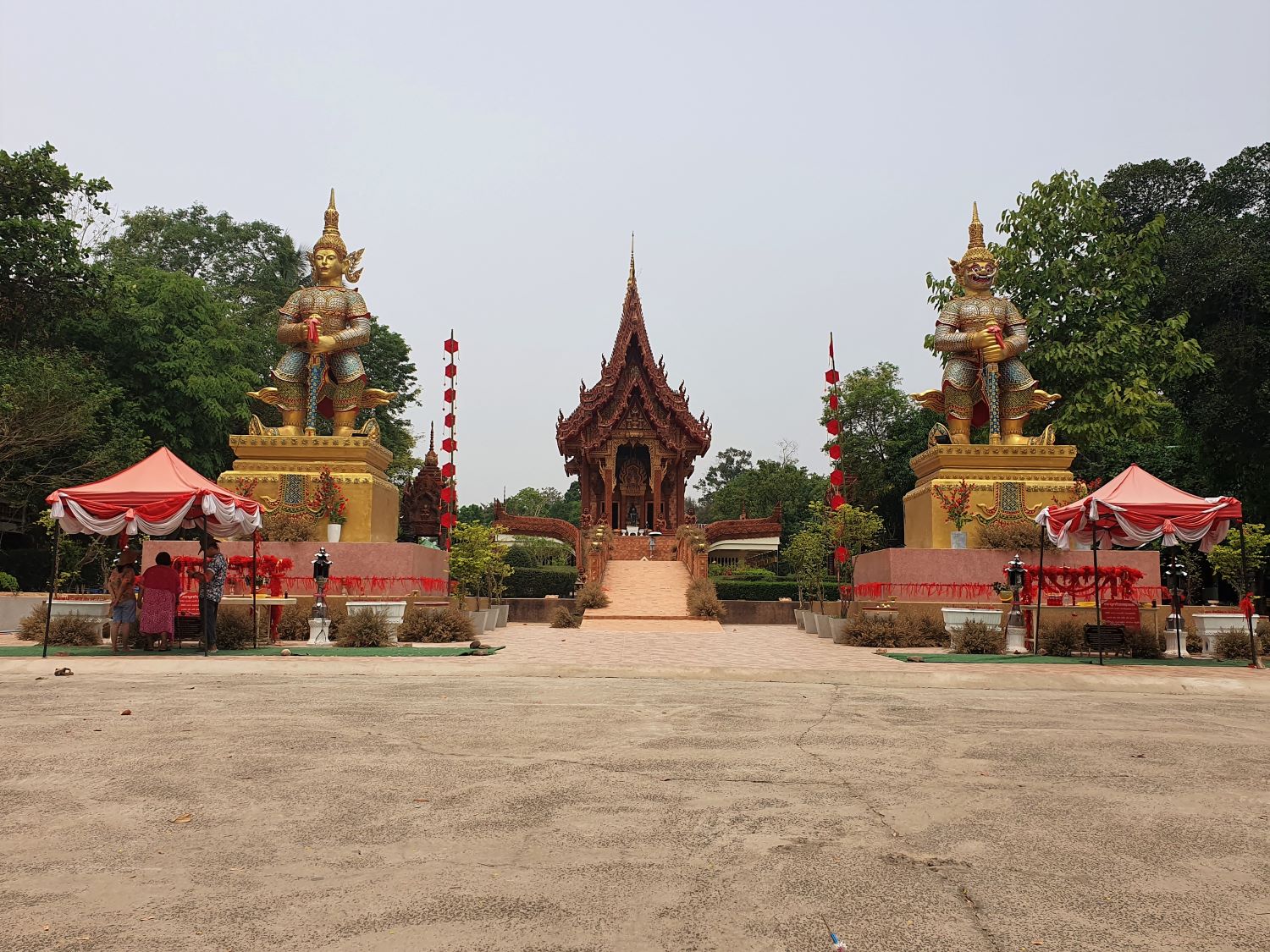
Wat Phu Khao Kaeo, Phibun,
Phibun Mangsahan District
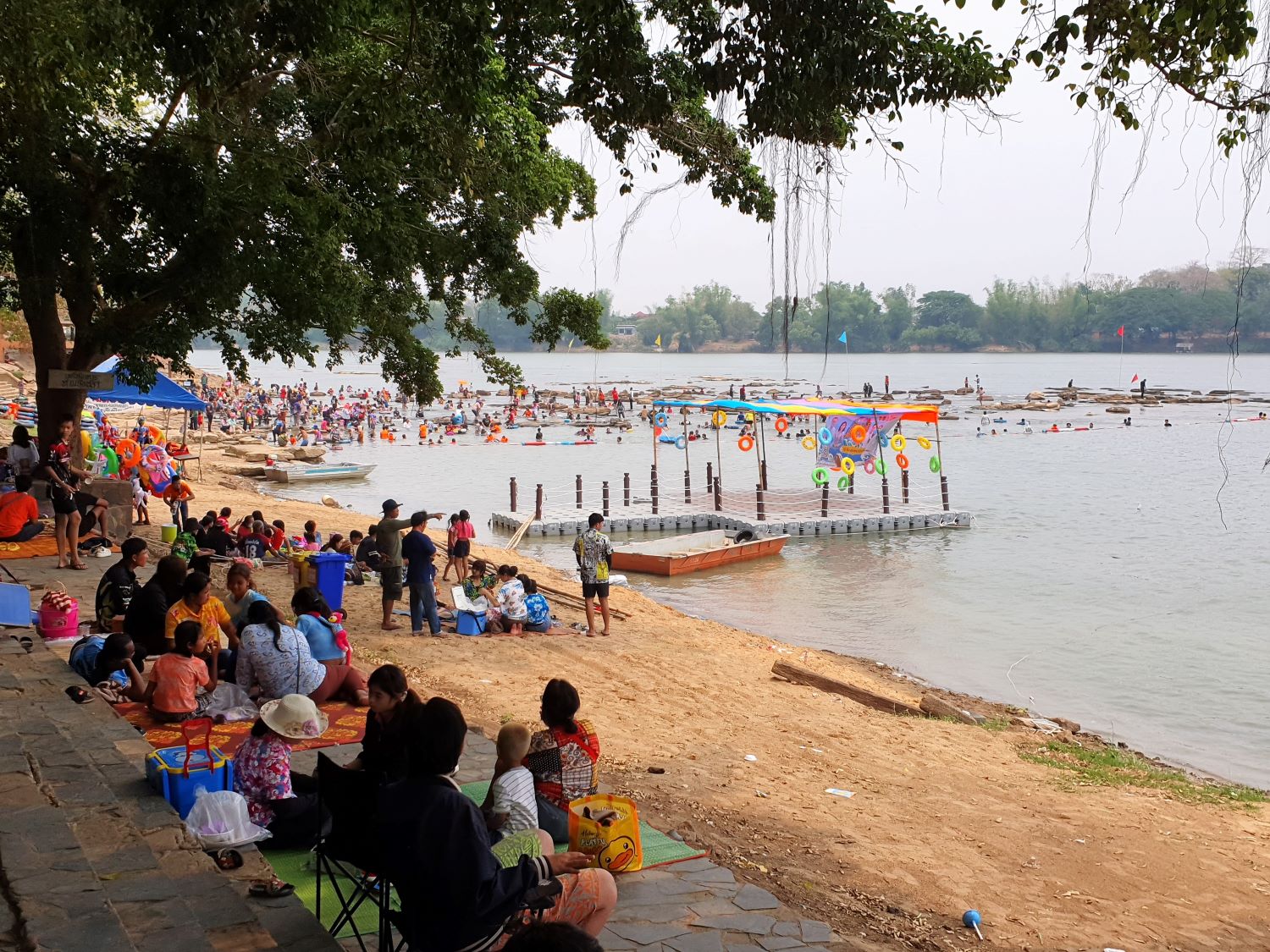
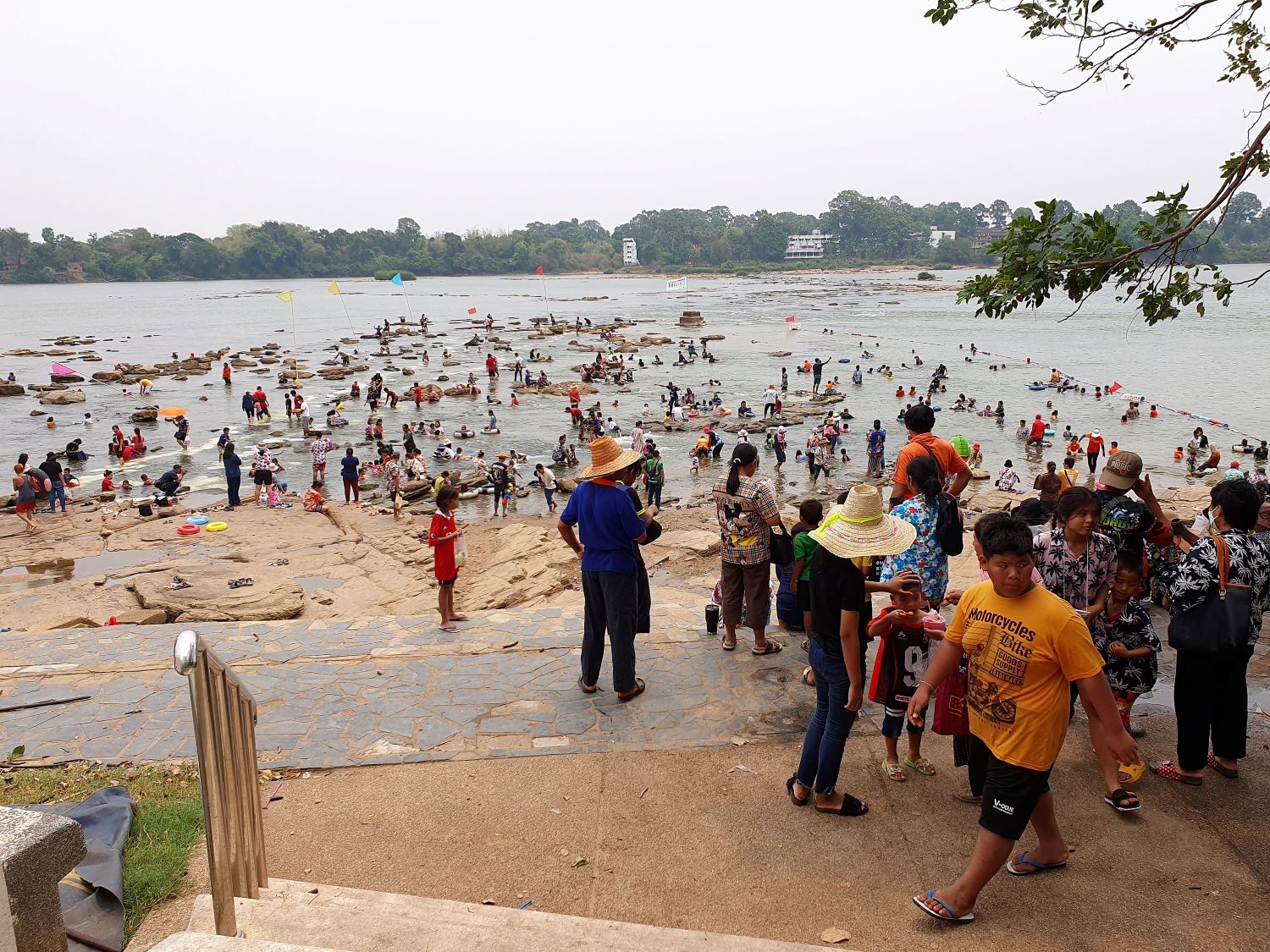
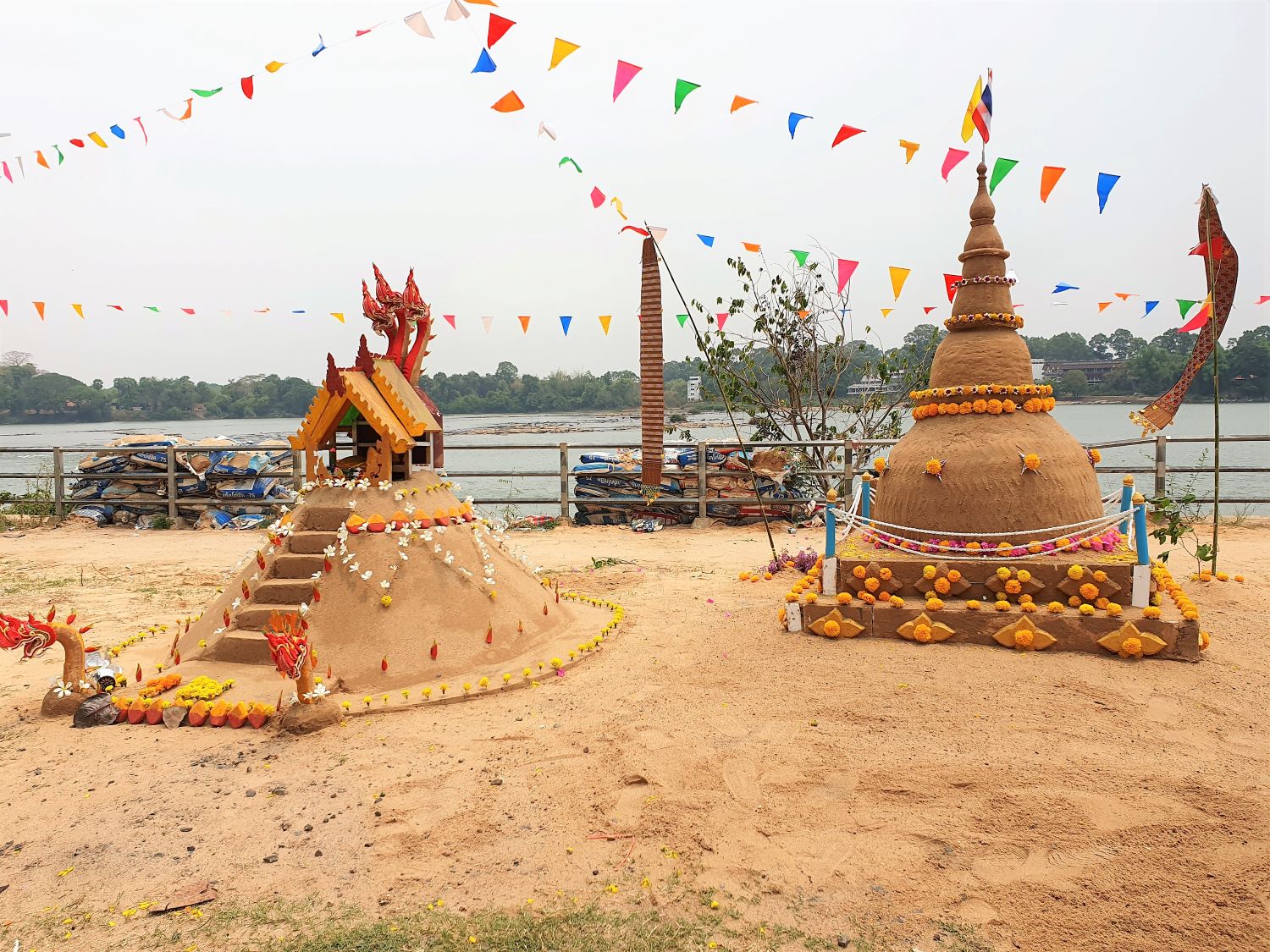
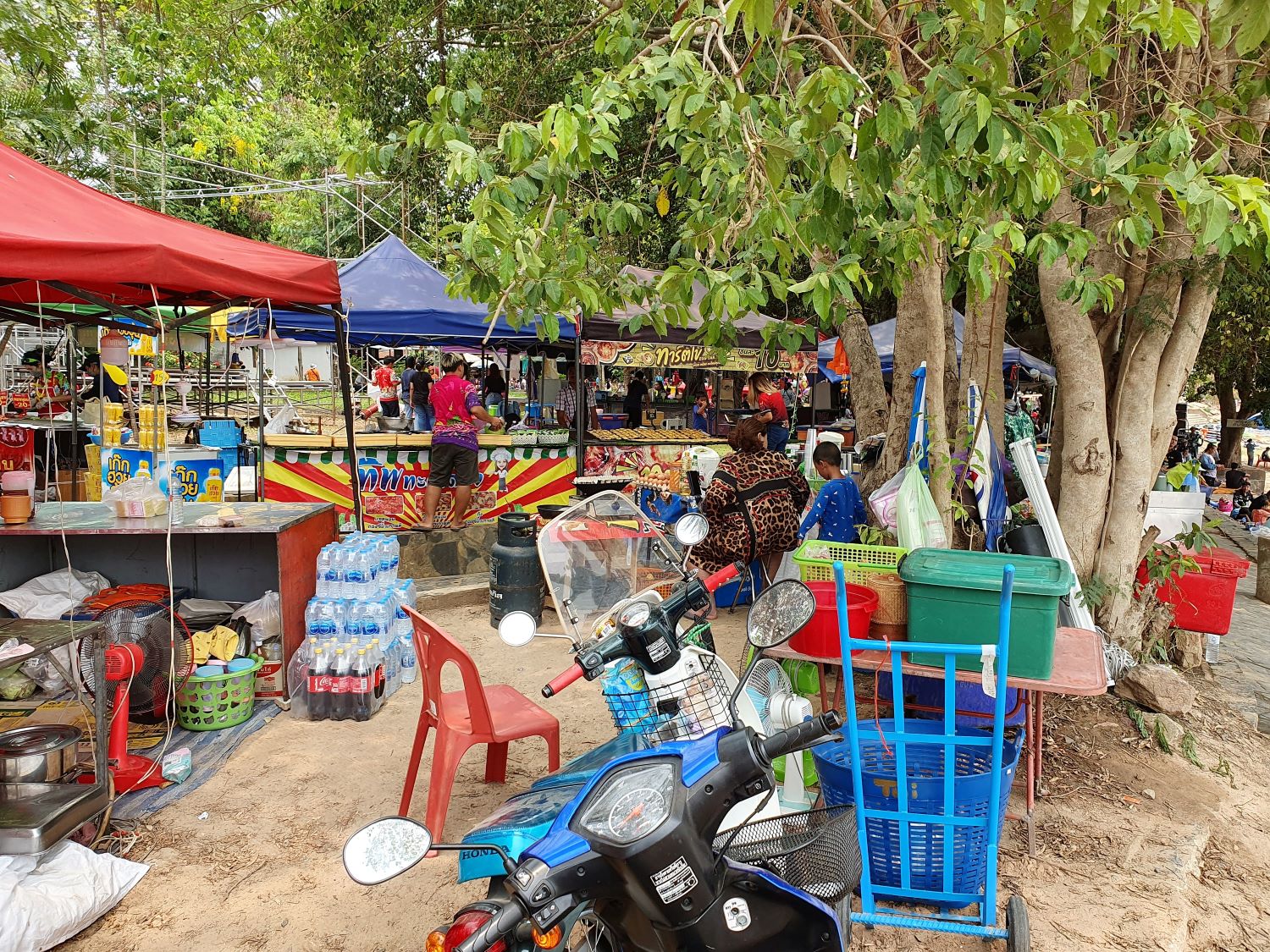
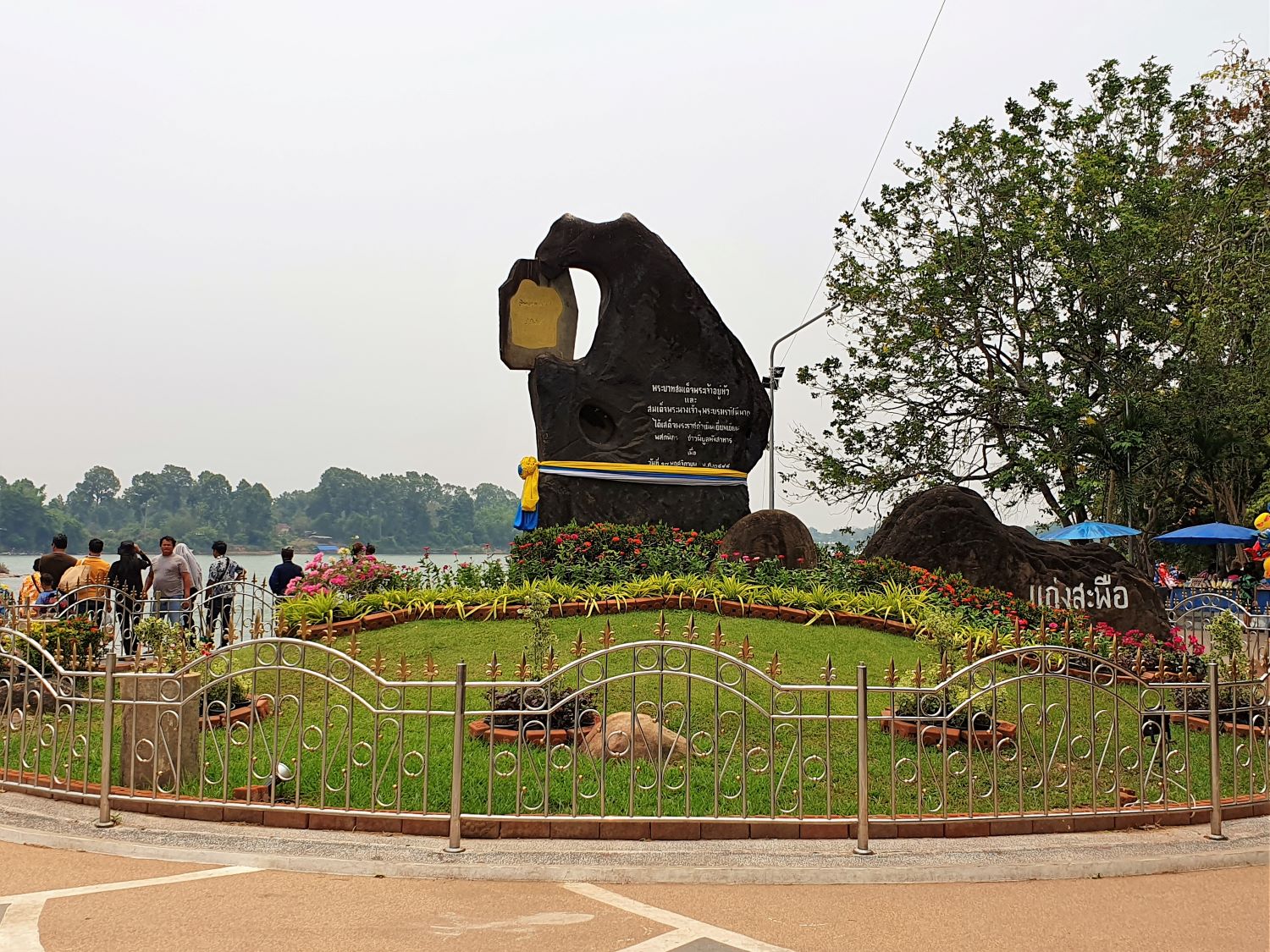

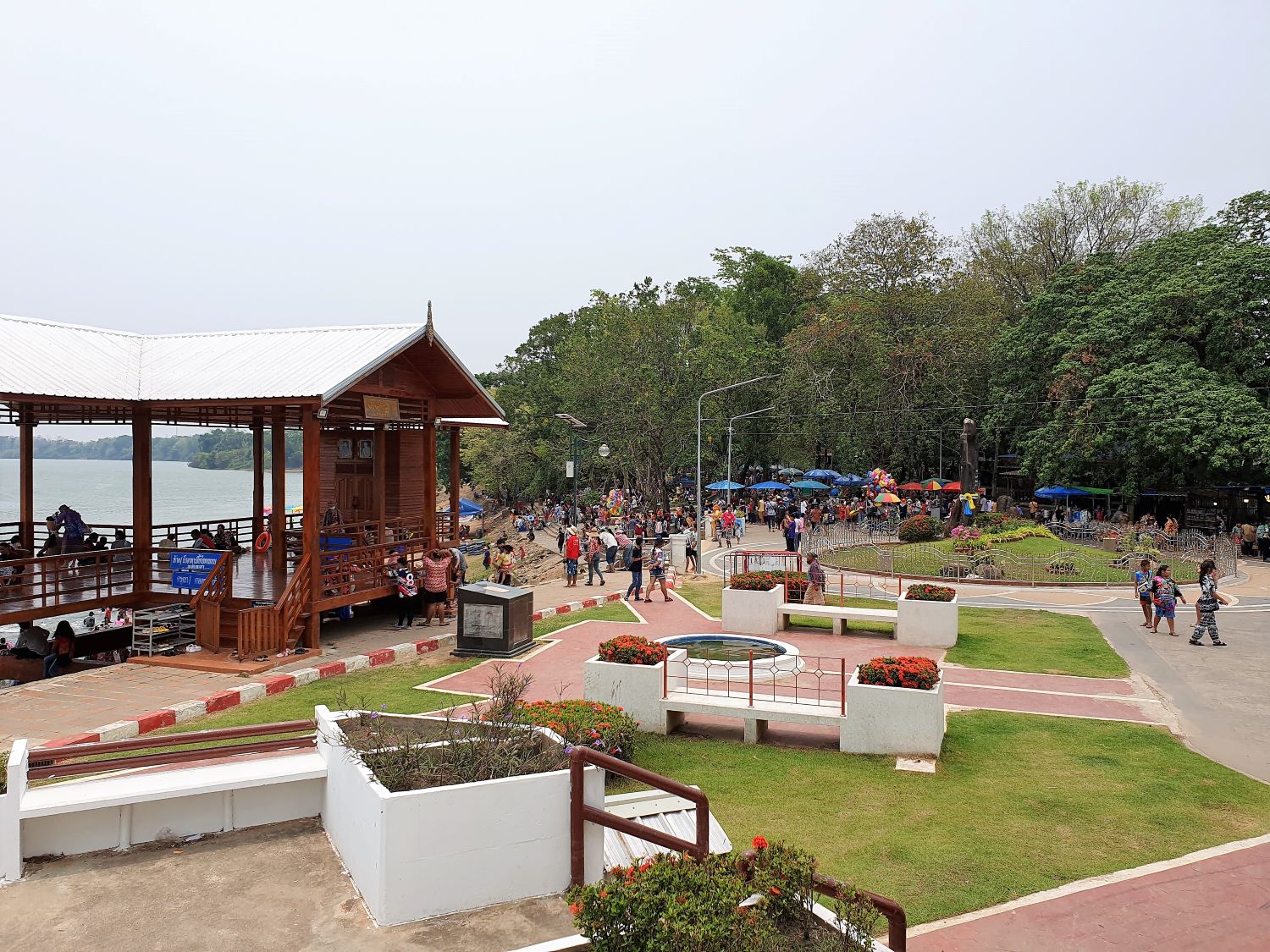
Kaeng Saphue, Phibun,
Phibun Mangsahan District
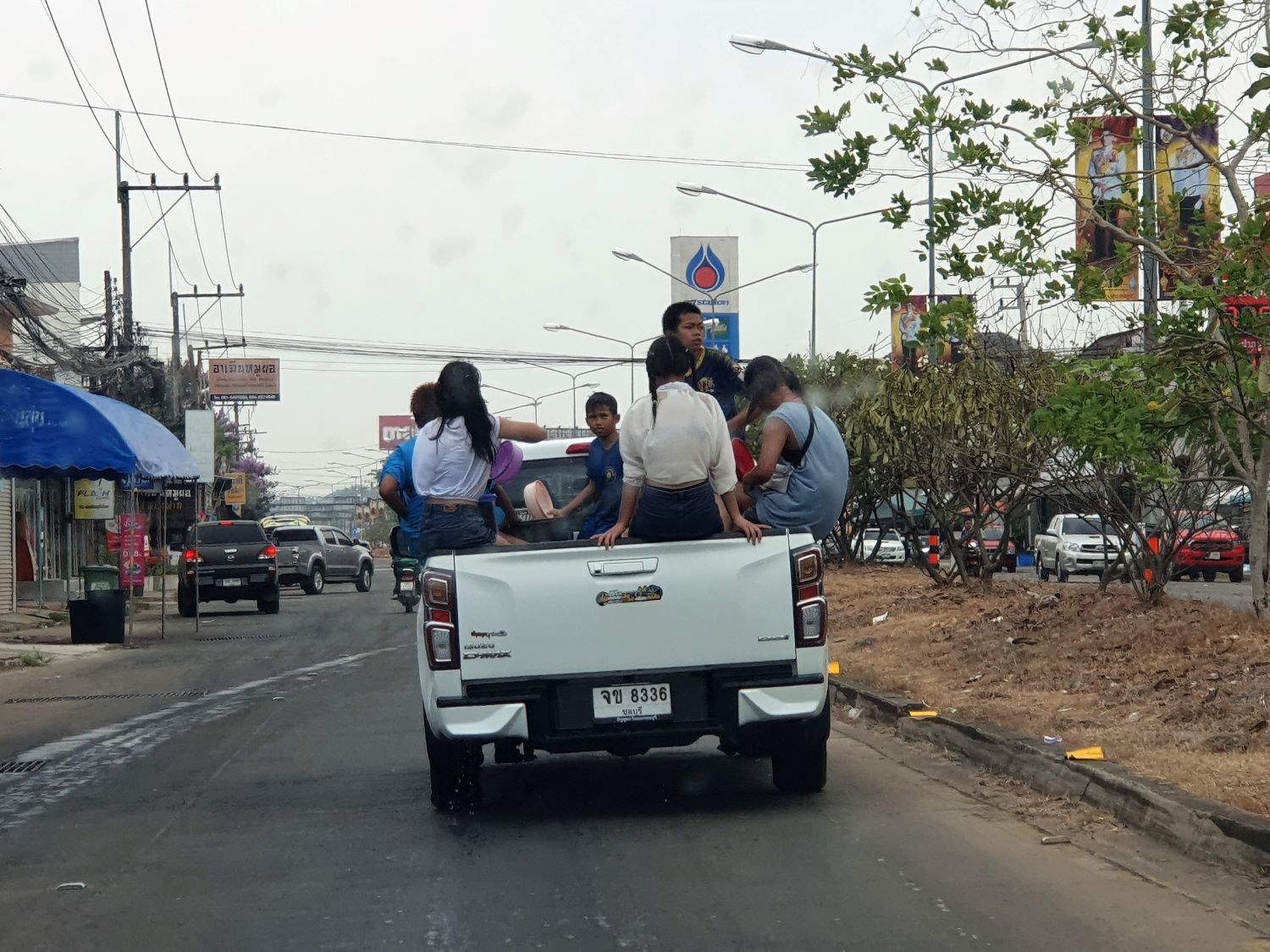
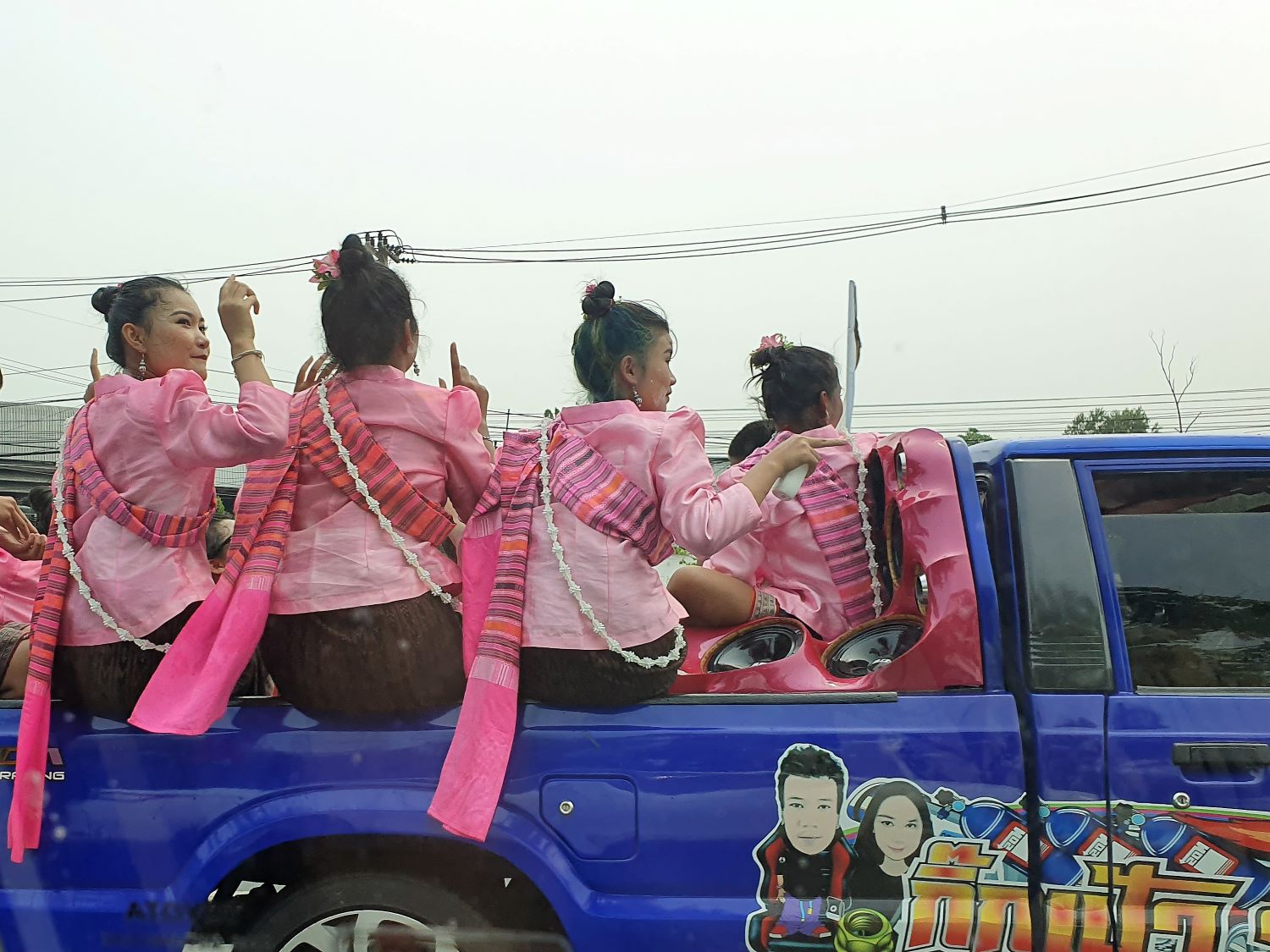
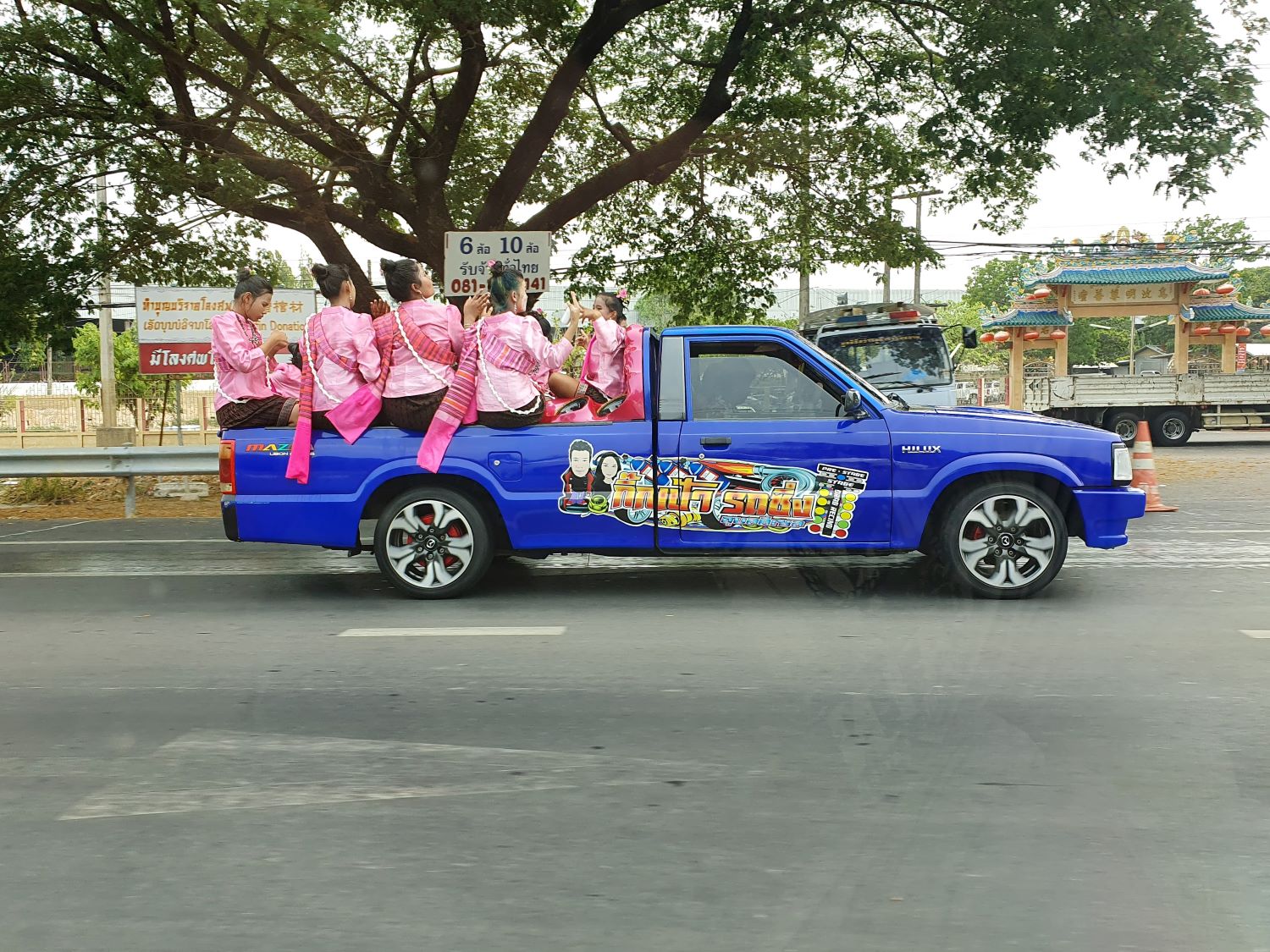
Songkran Festival 2023, Various Locations
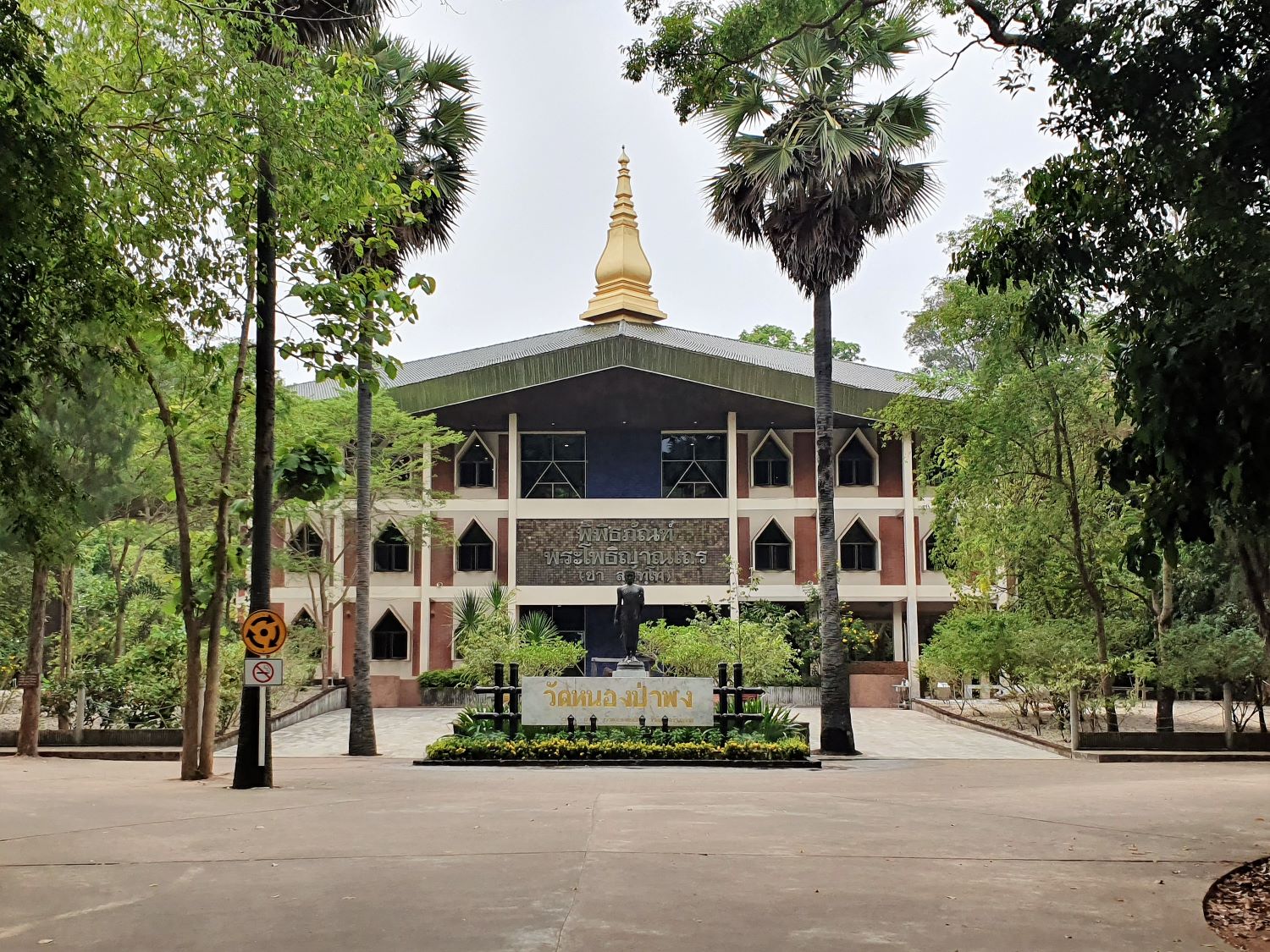
Wat Nong Pa Phong, Warin Chamrap,
Ubon Ratchathani
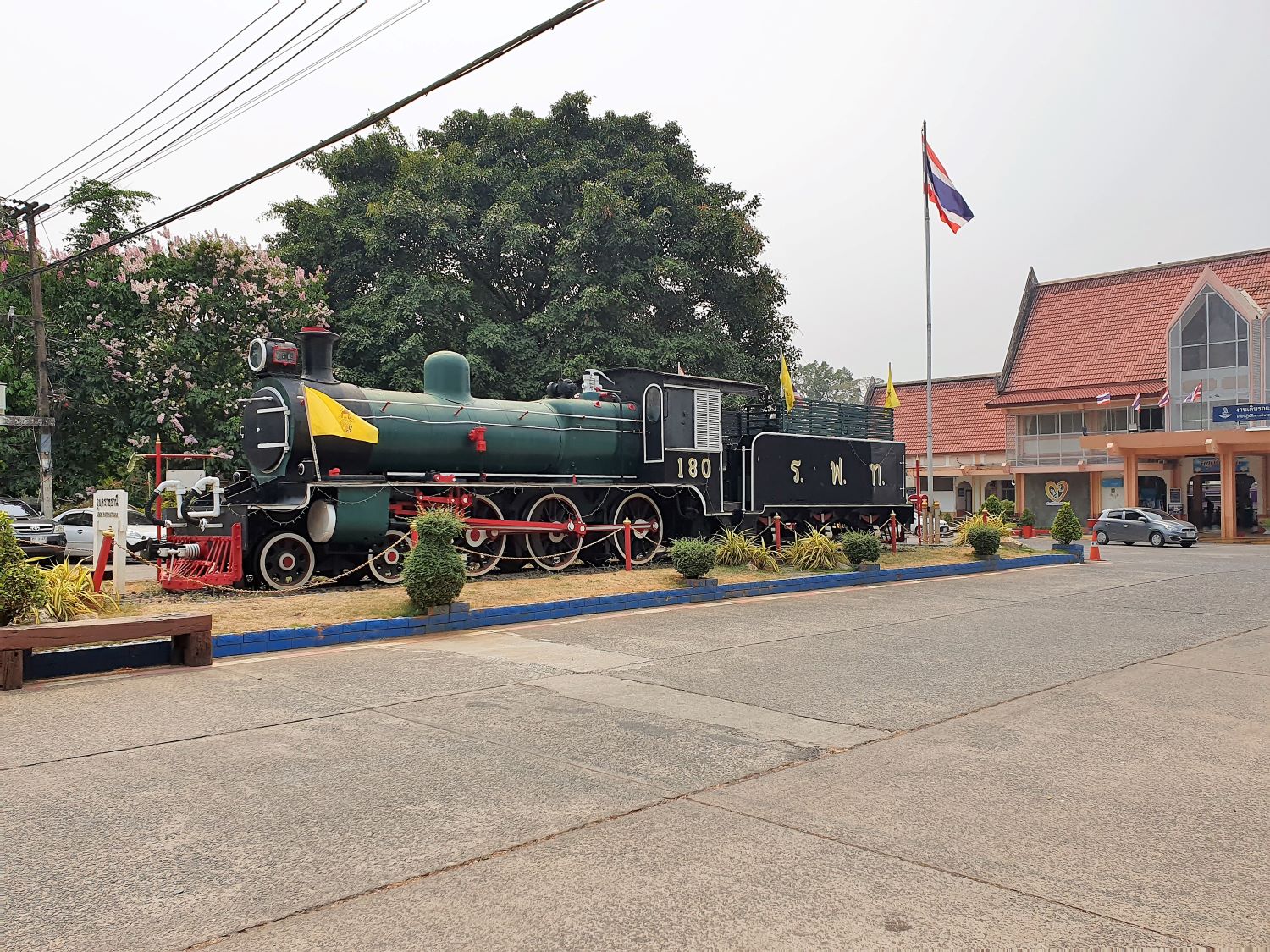
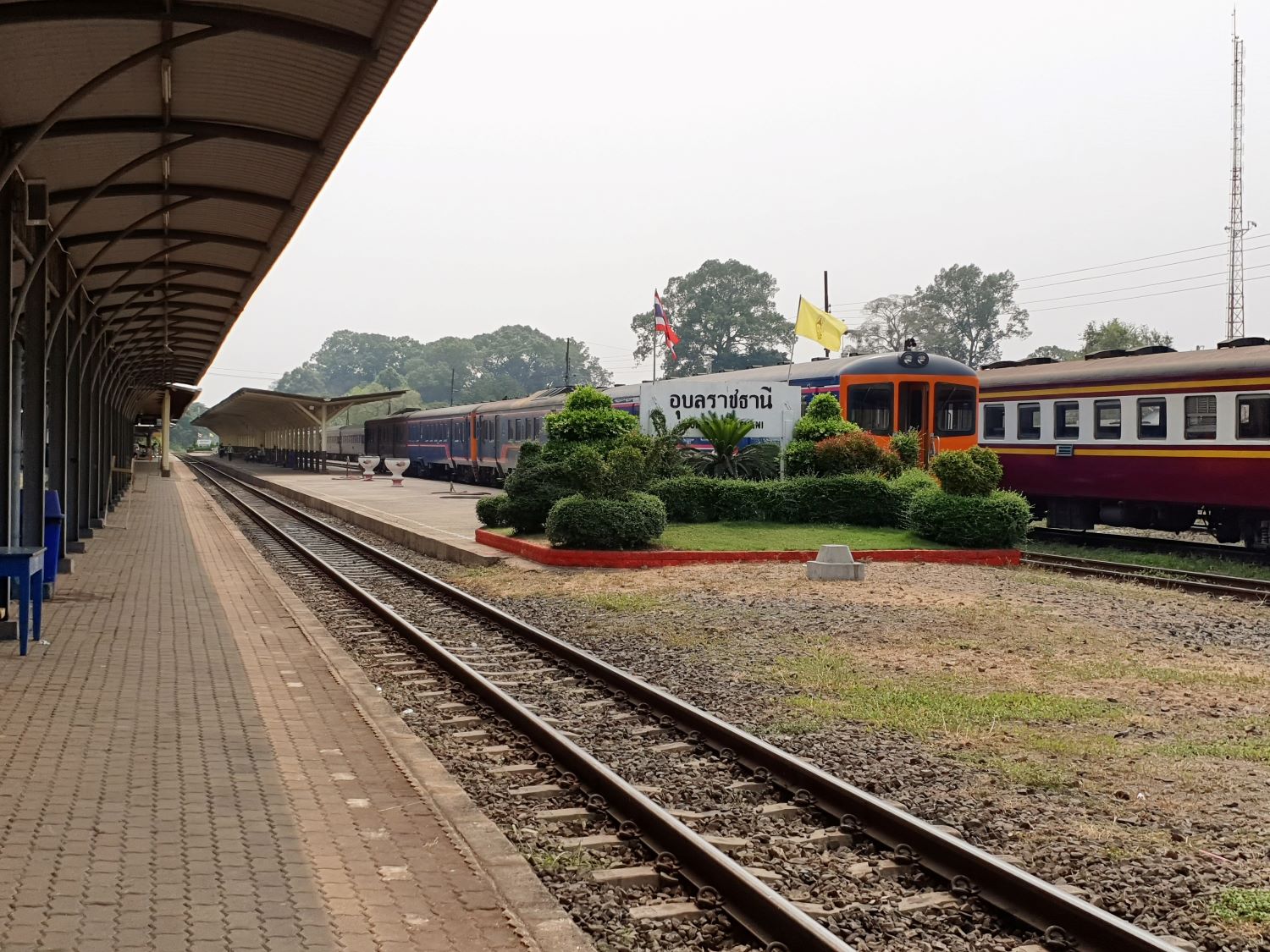
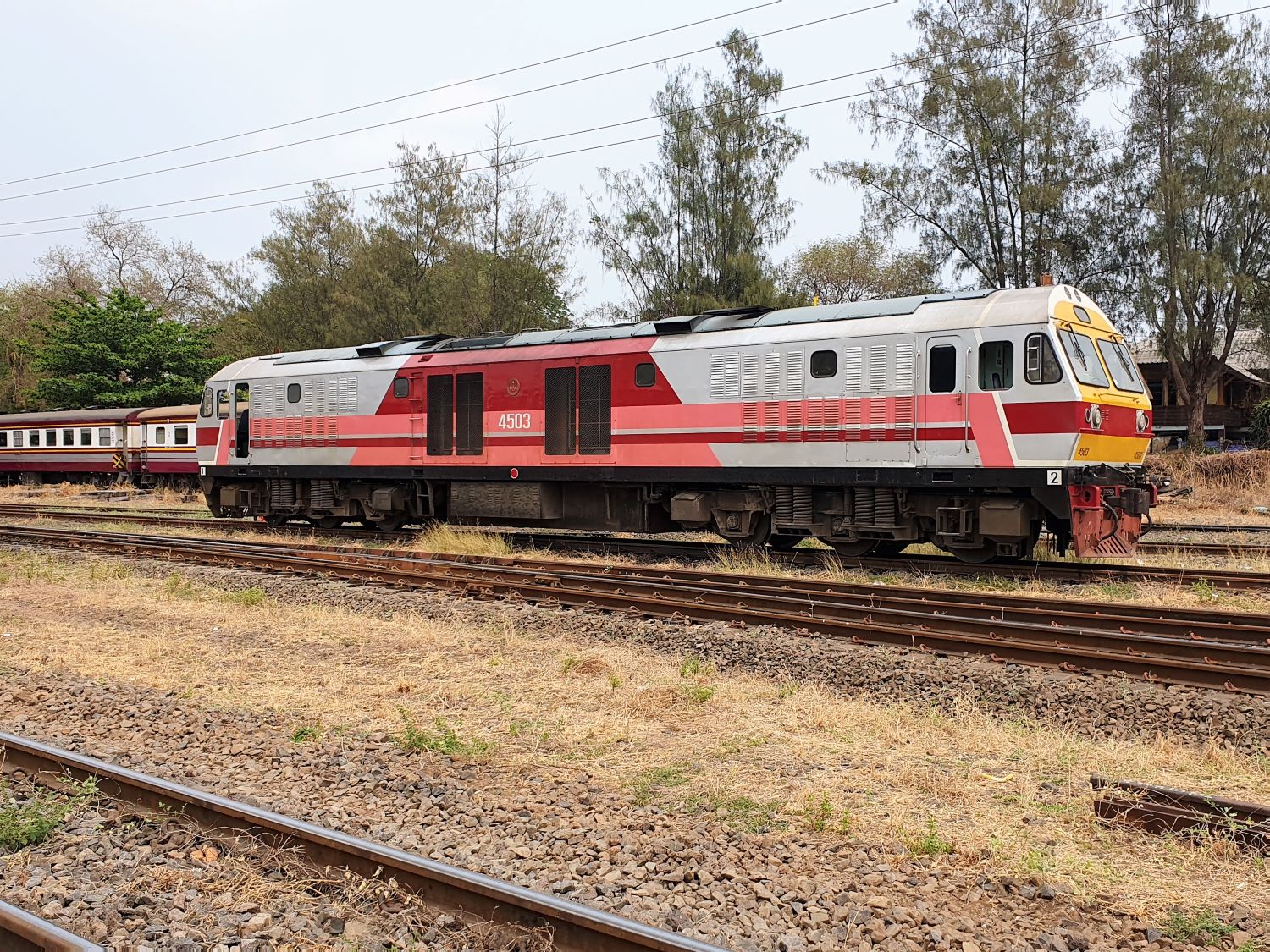
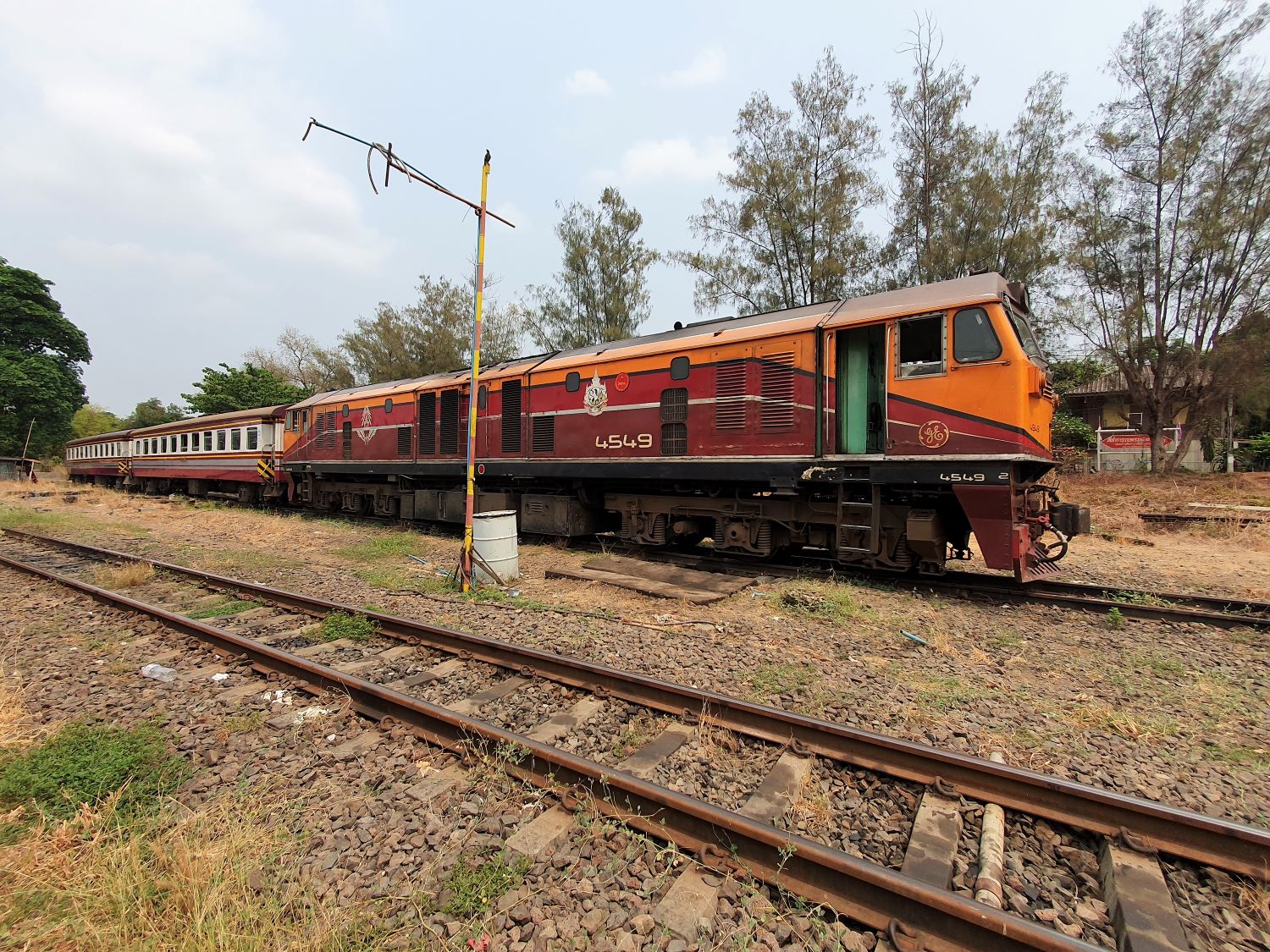
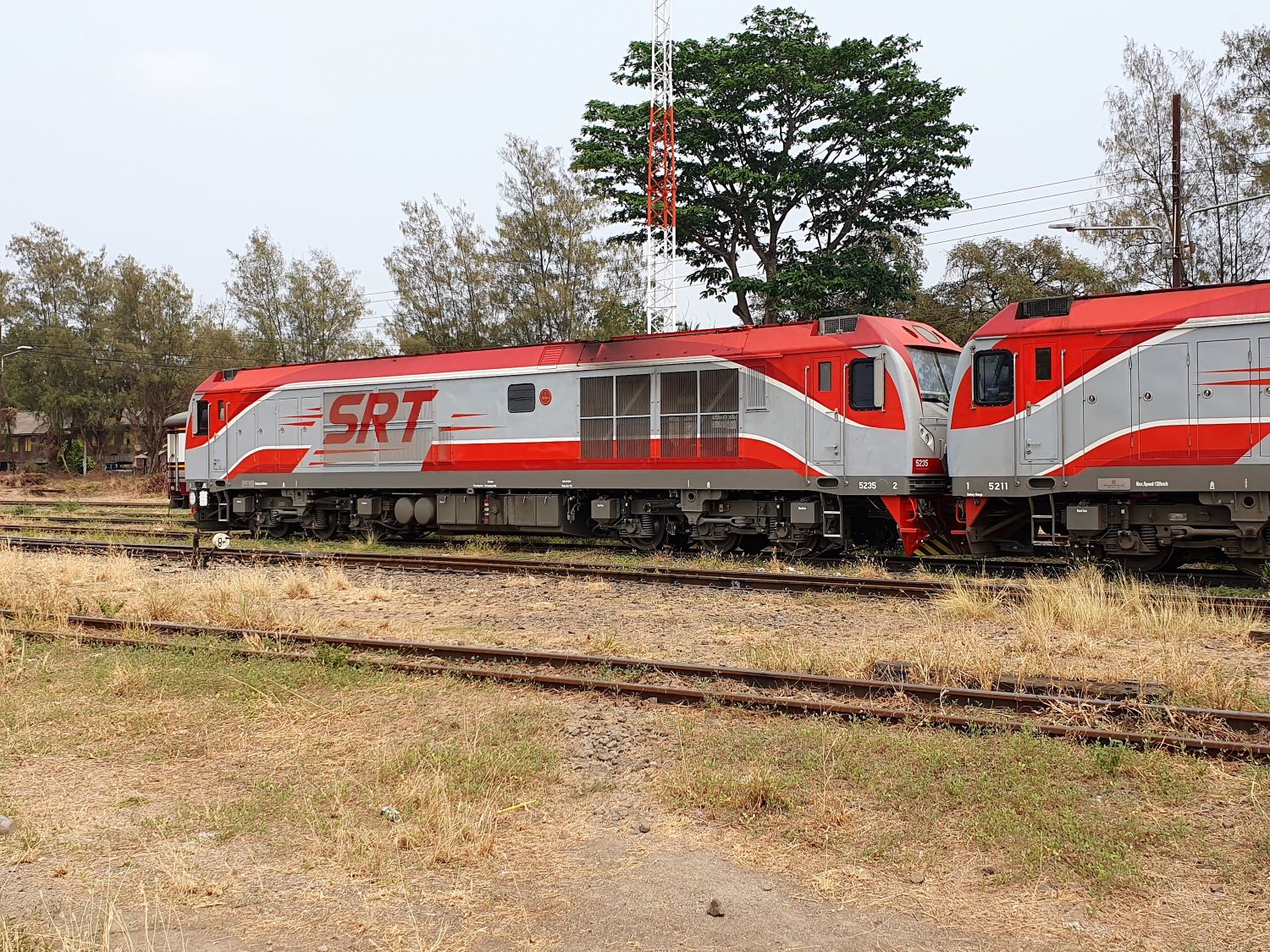
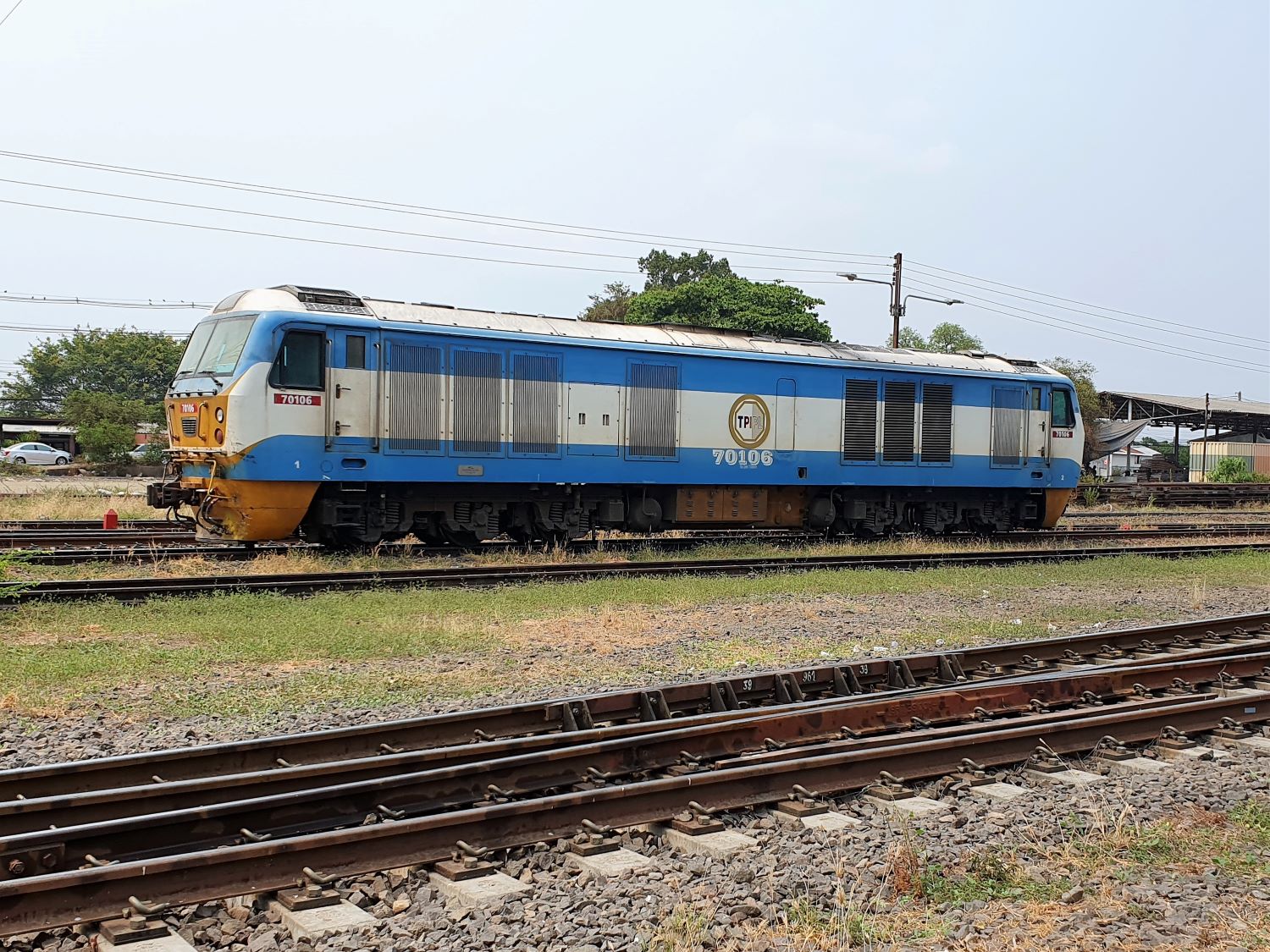
Ubon Ratchathani Railway Station,
Warin Chamrap, Ubon Ratchathani
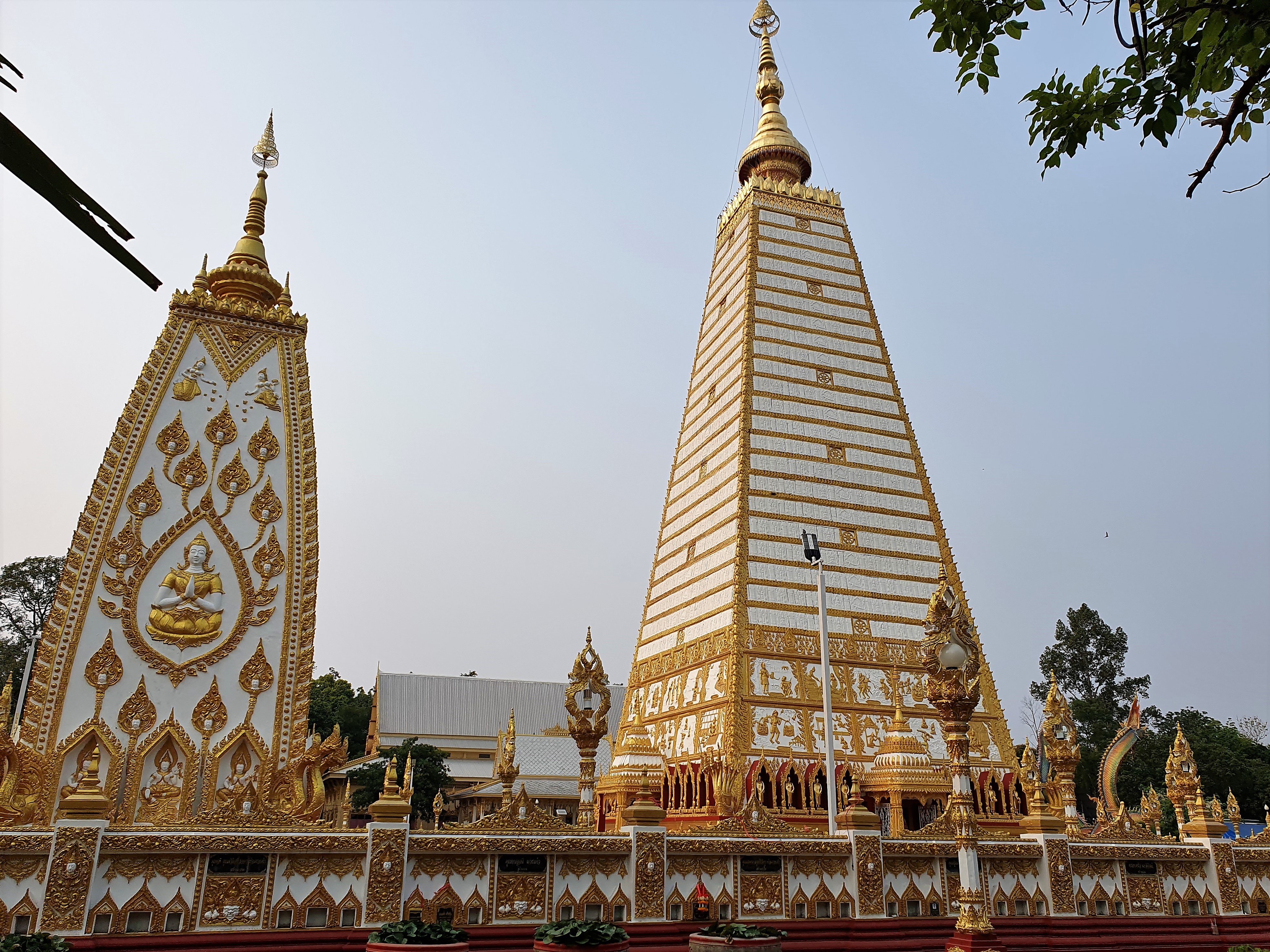
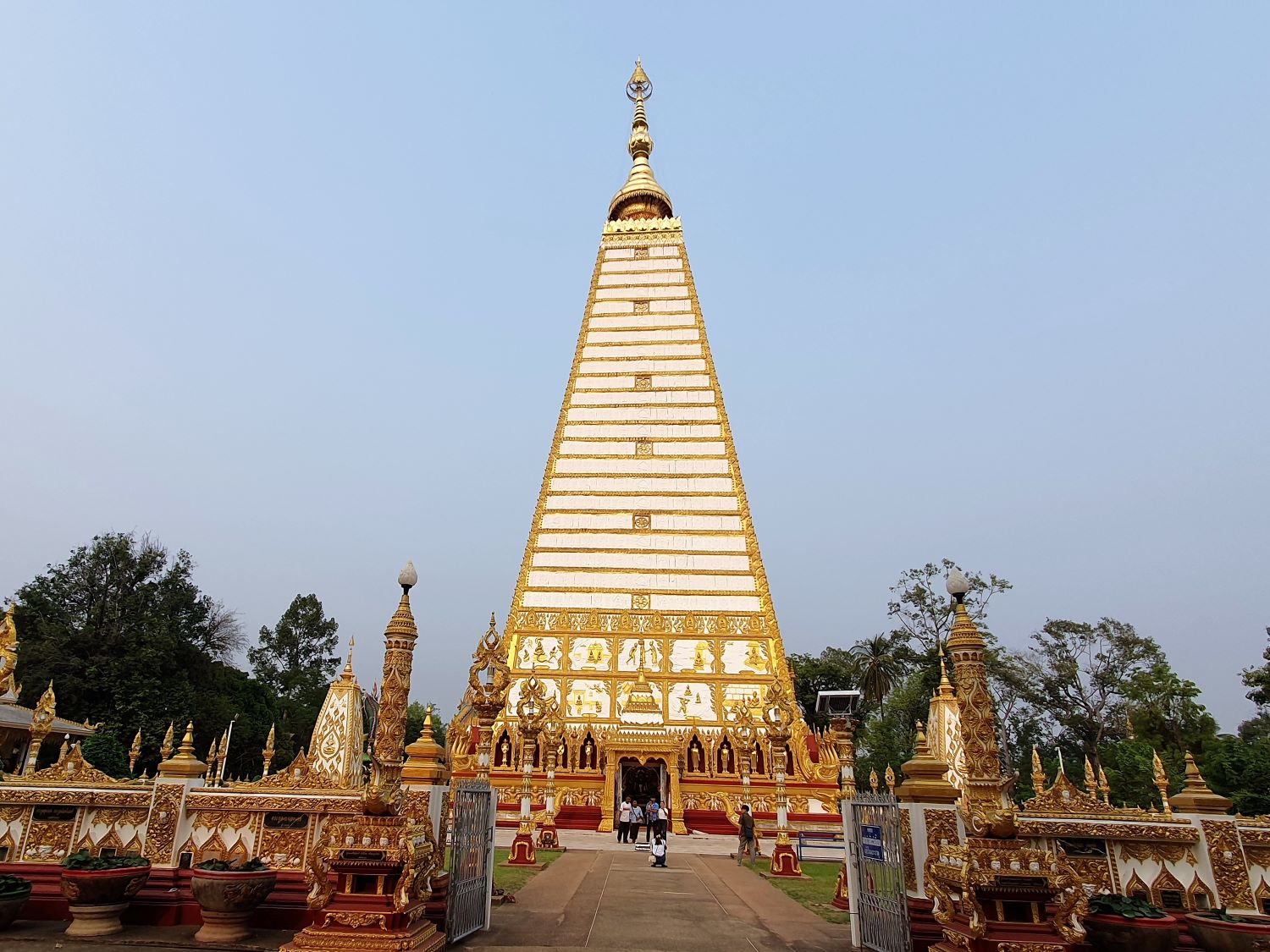
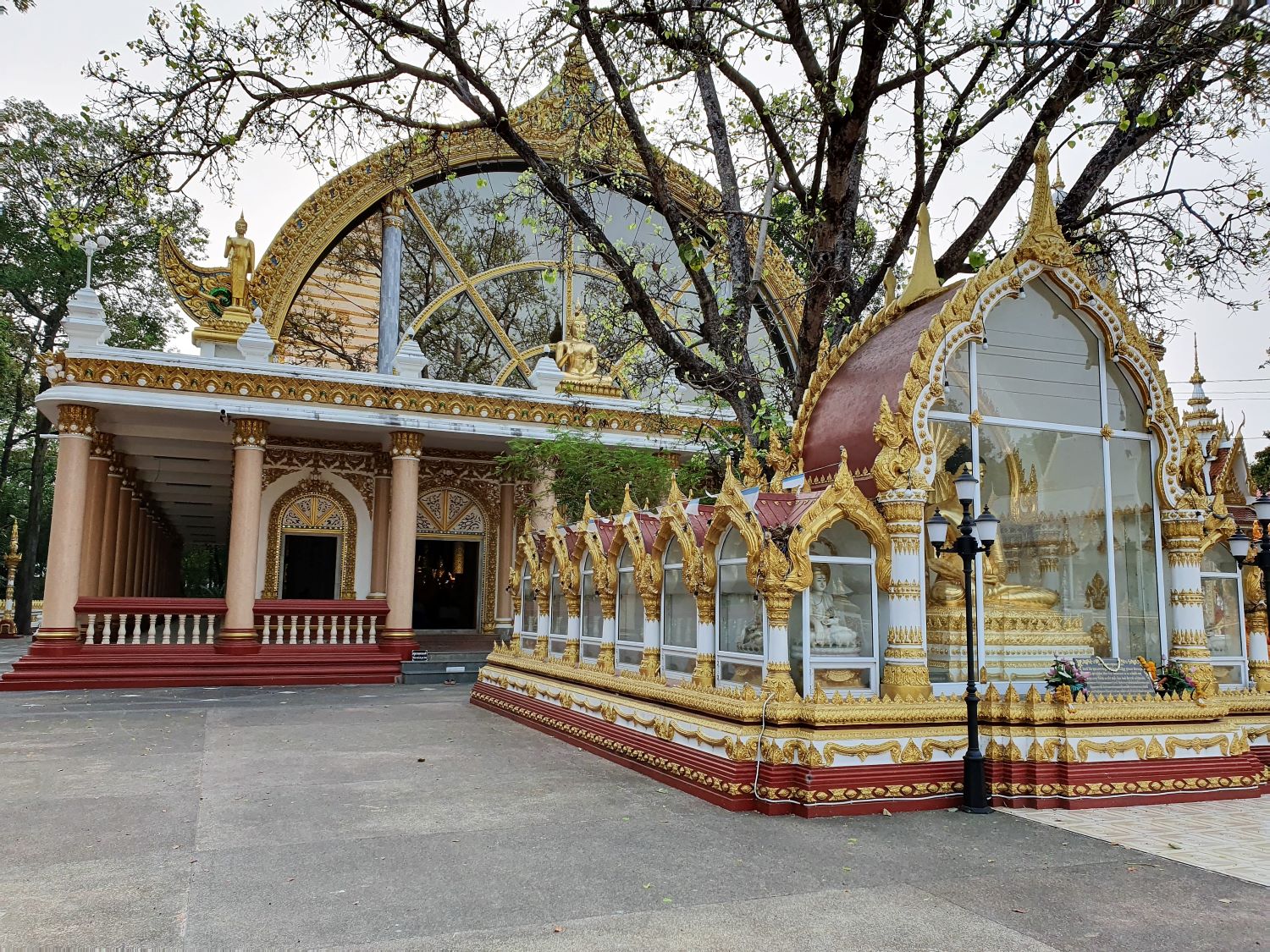
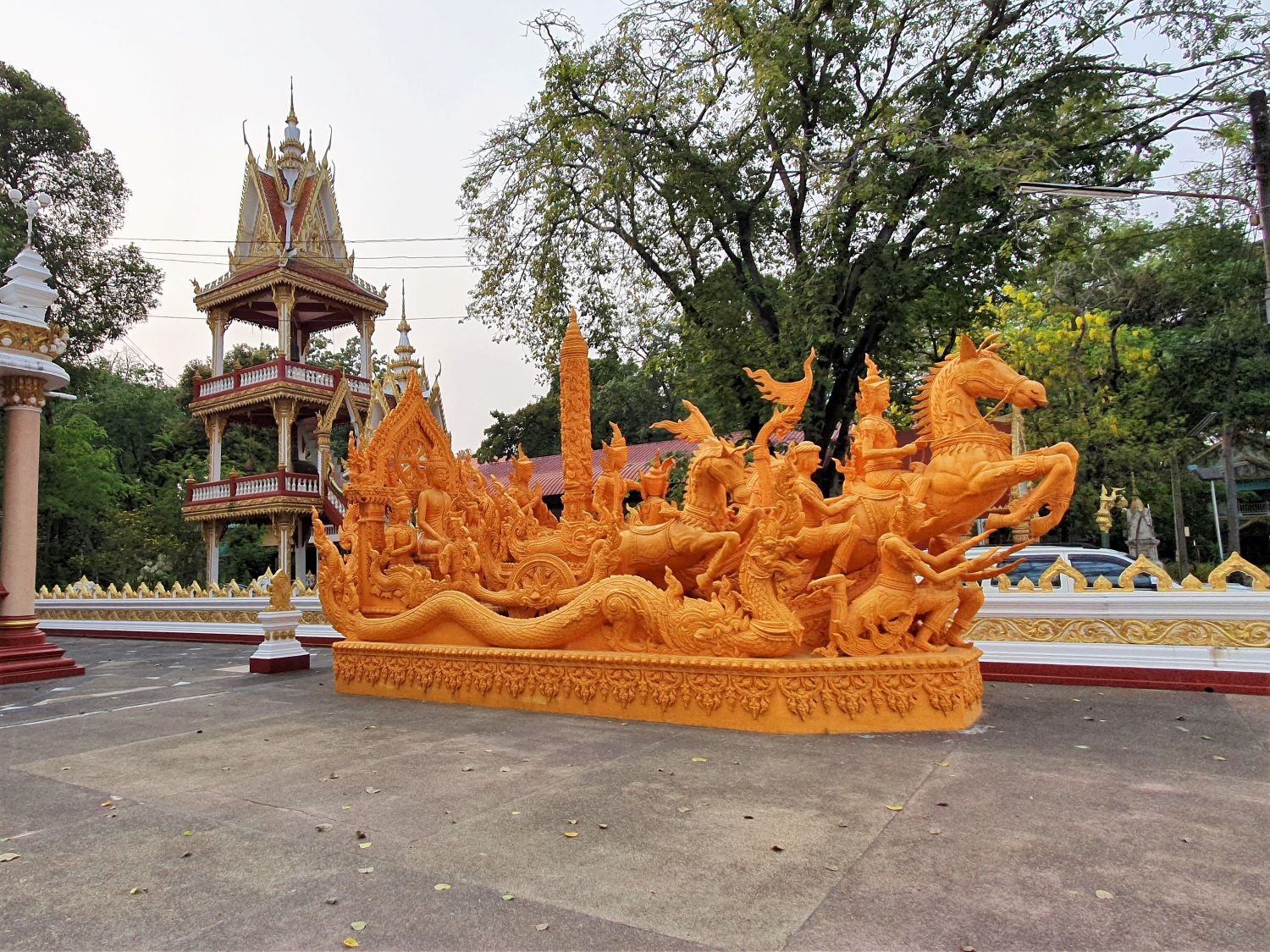
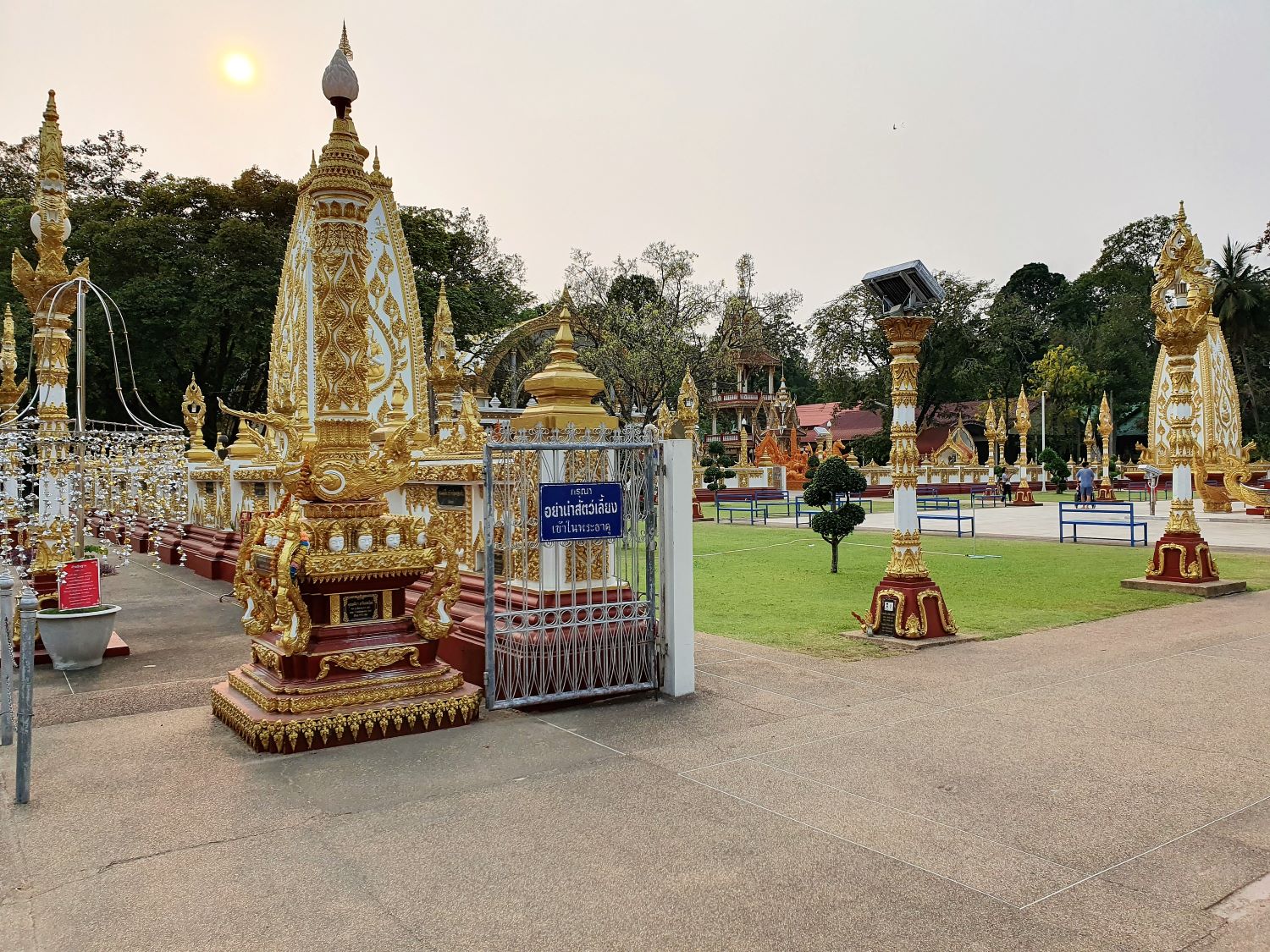
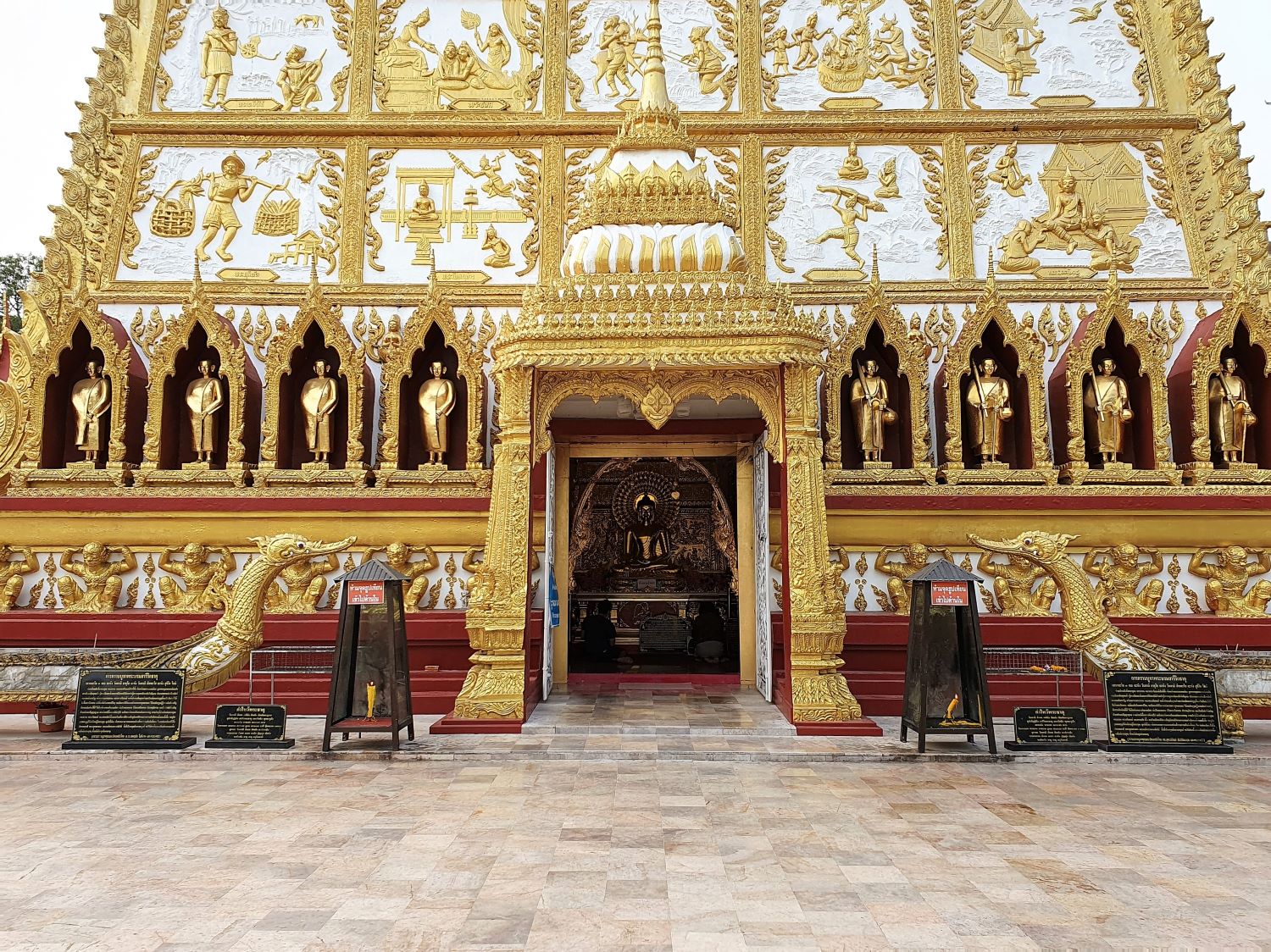
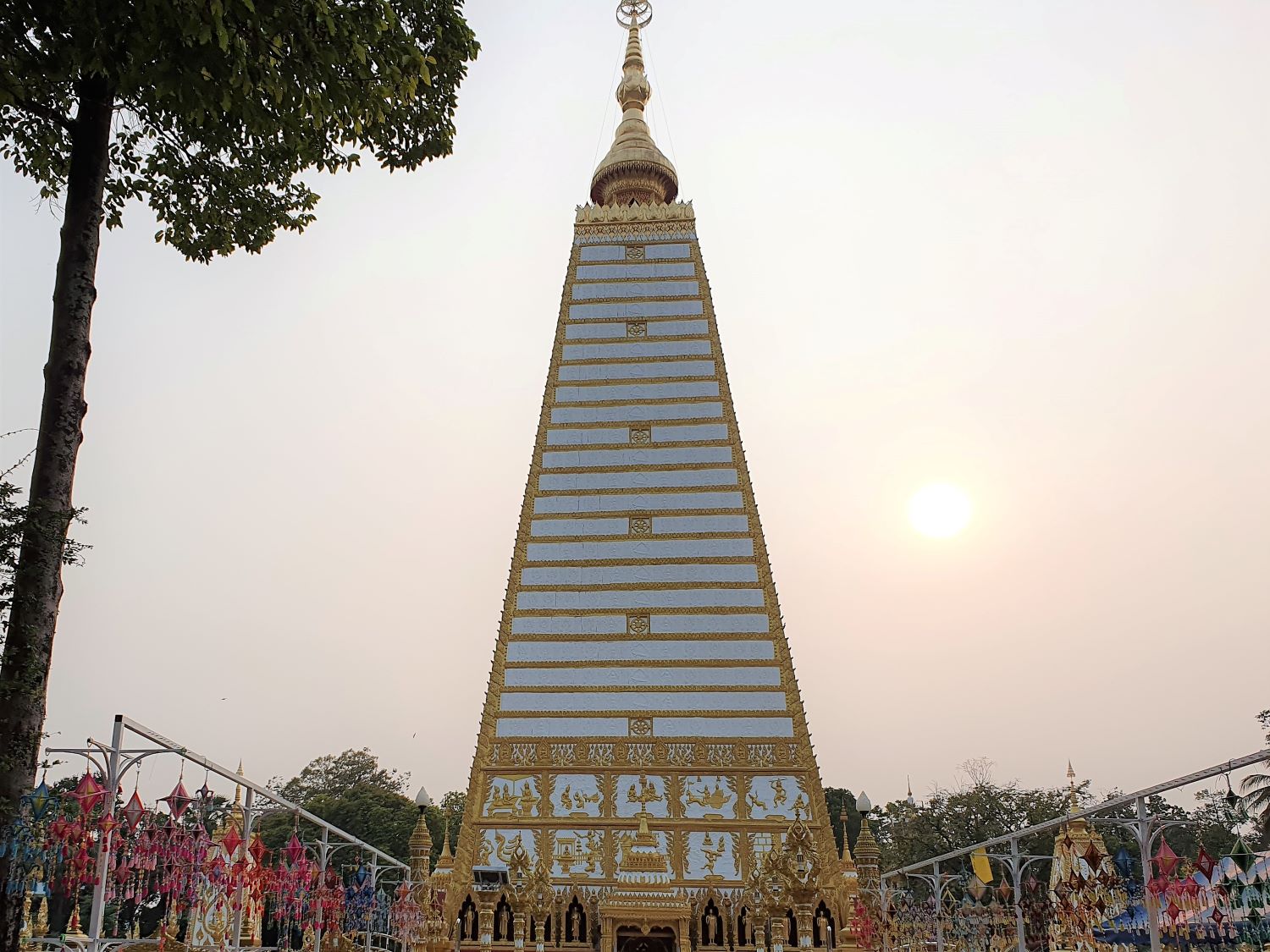
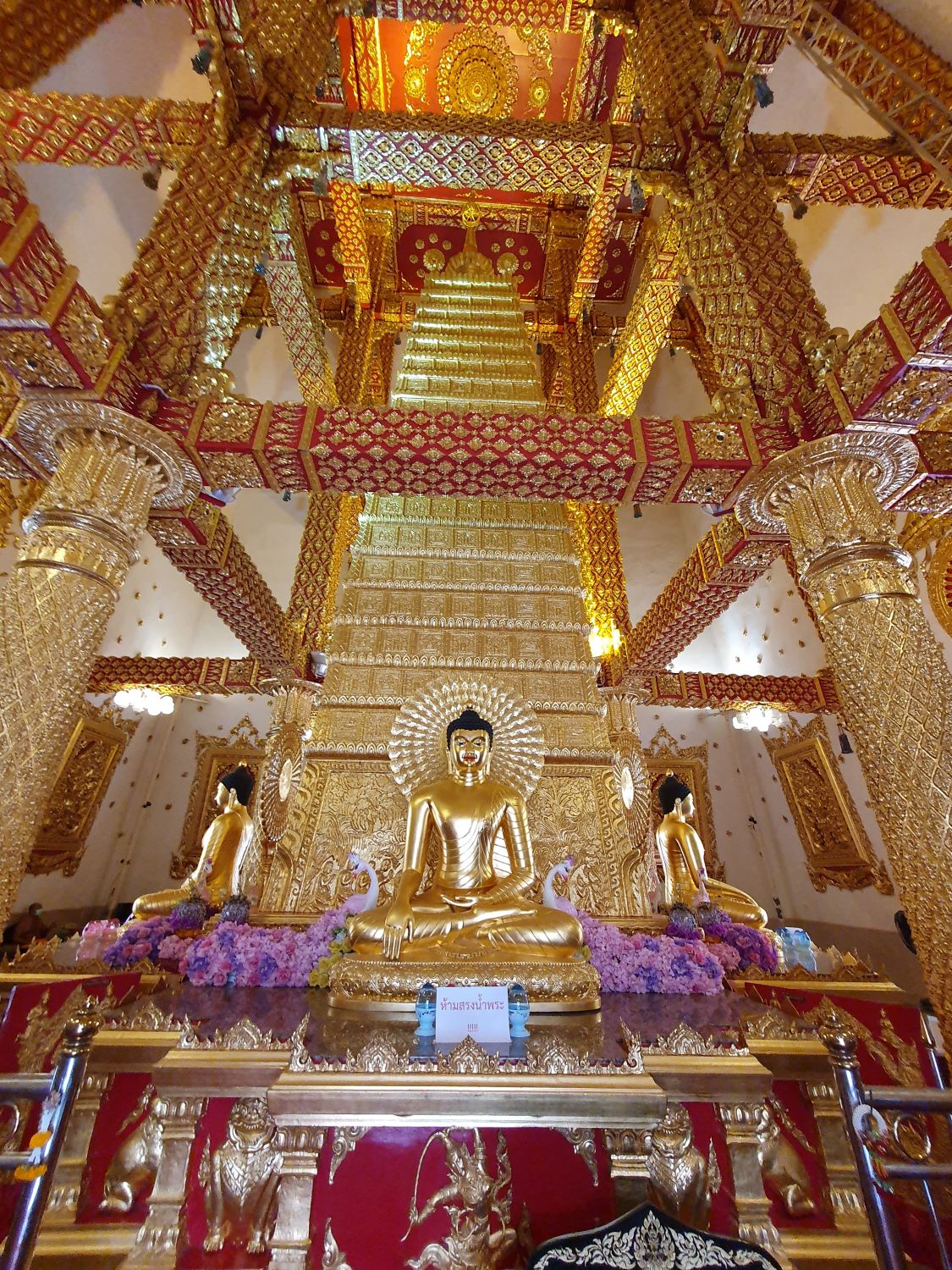
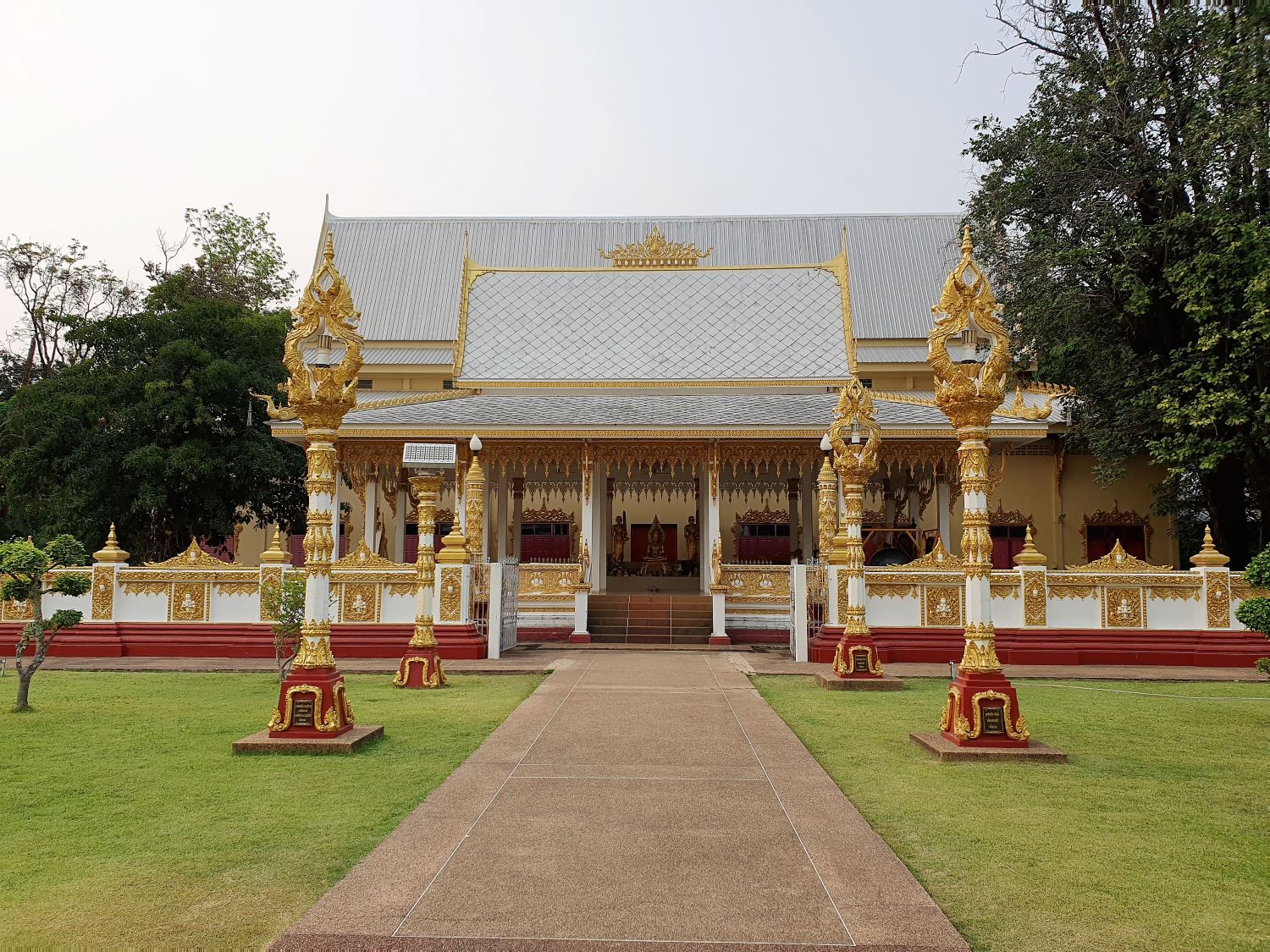
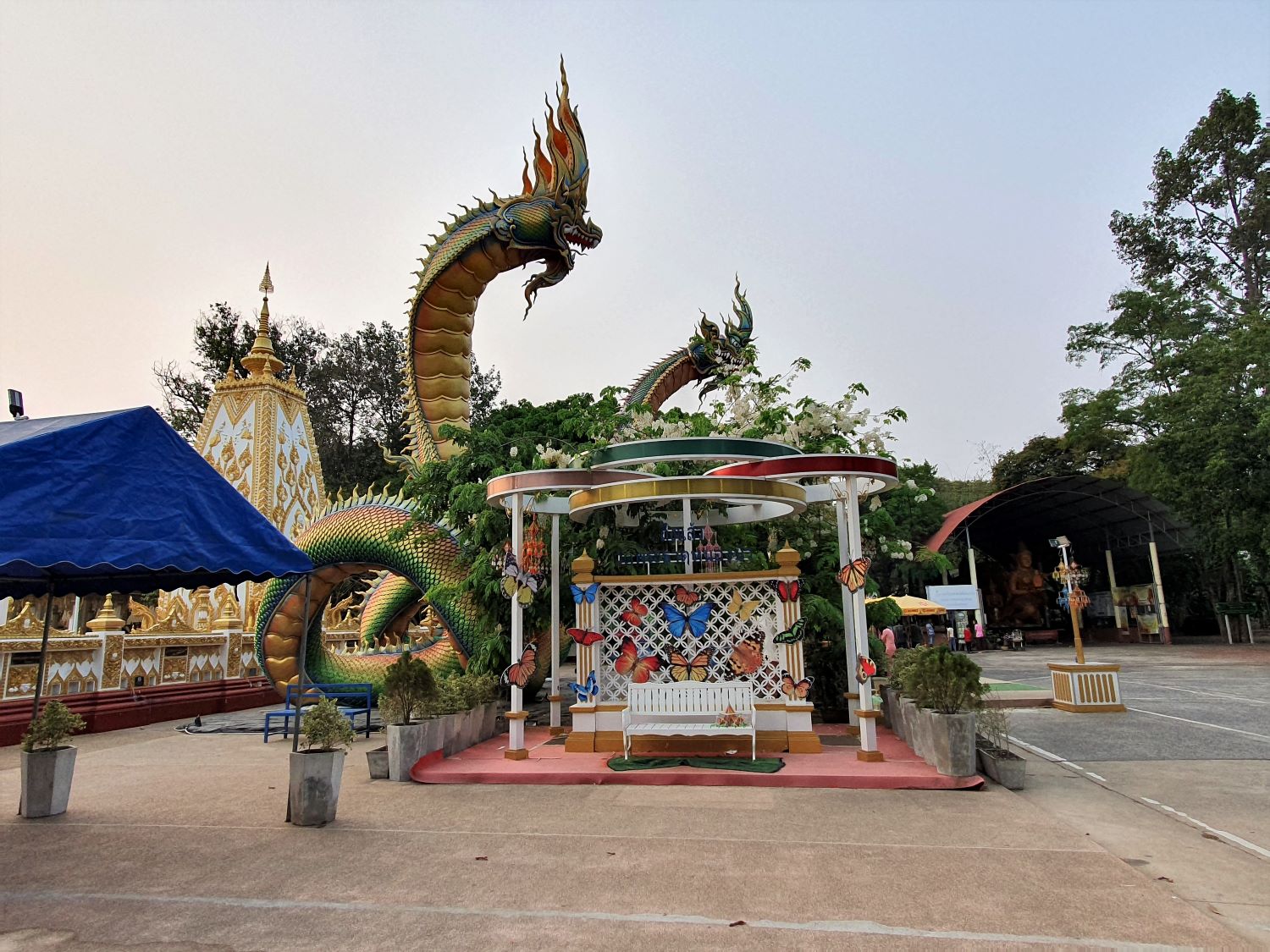
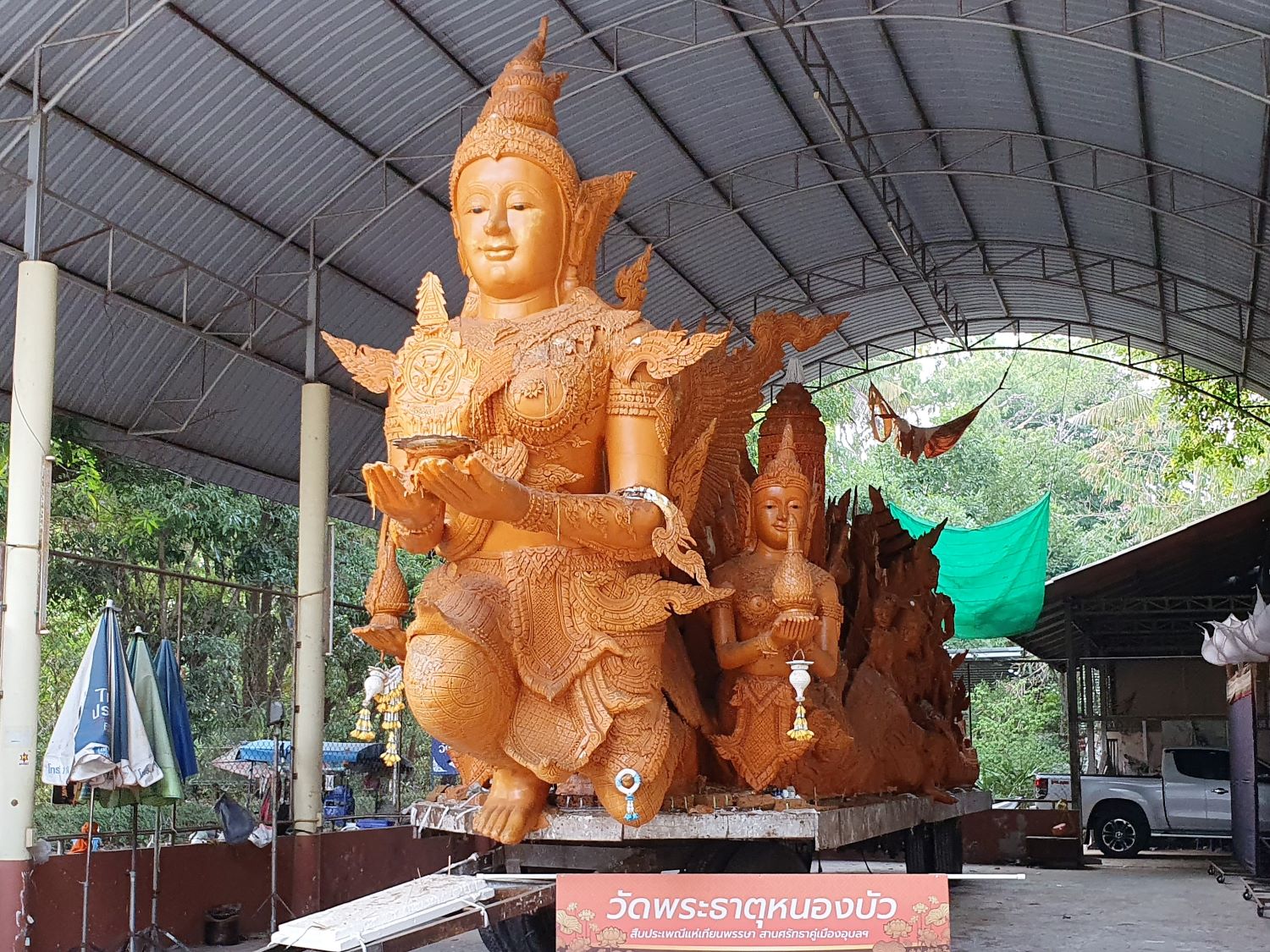
Wat Phra That Nong Bua,
Mueang Ubon Ratchathani
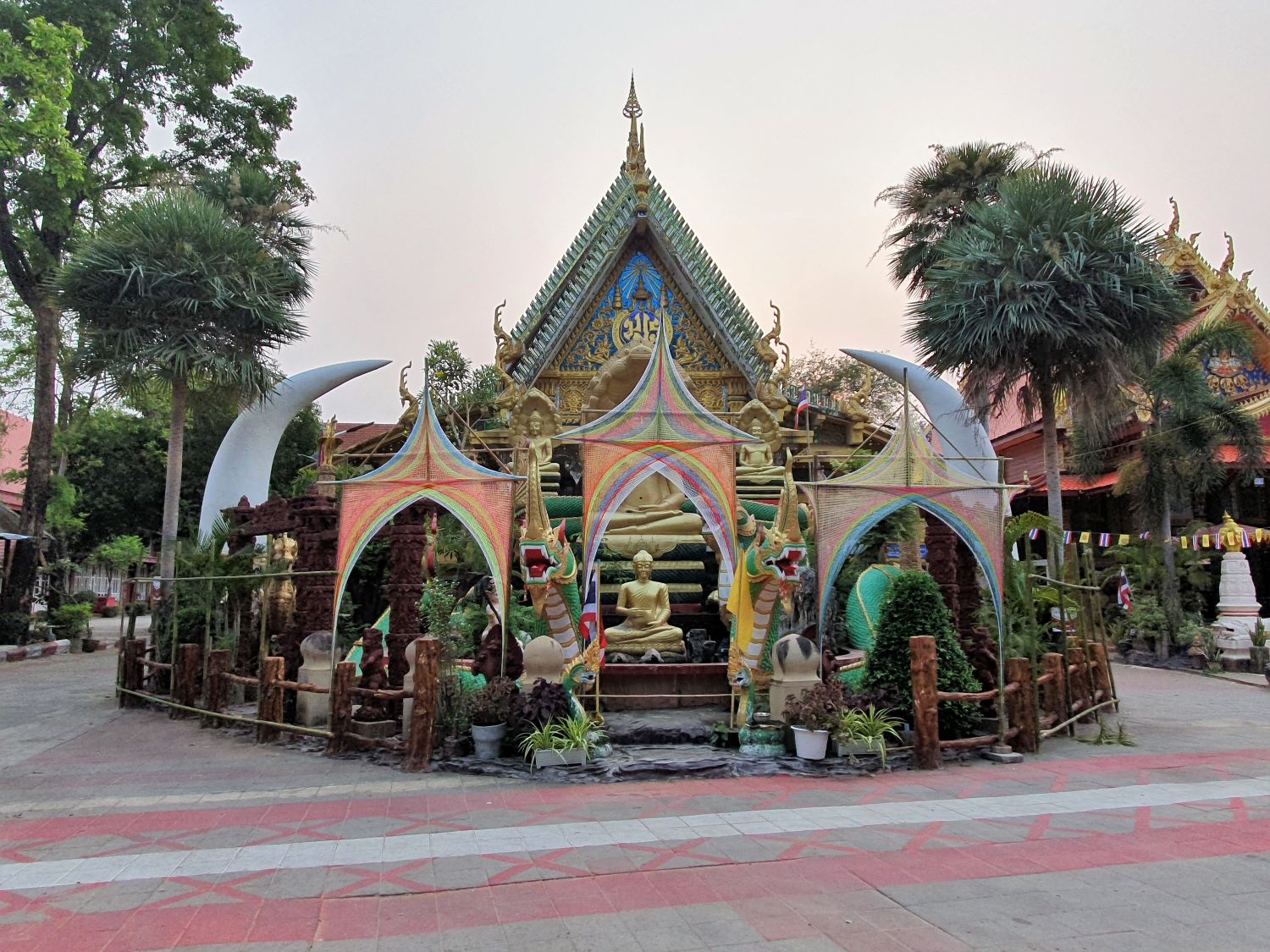
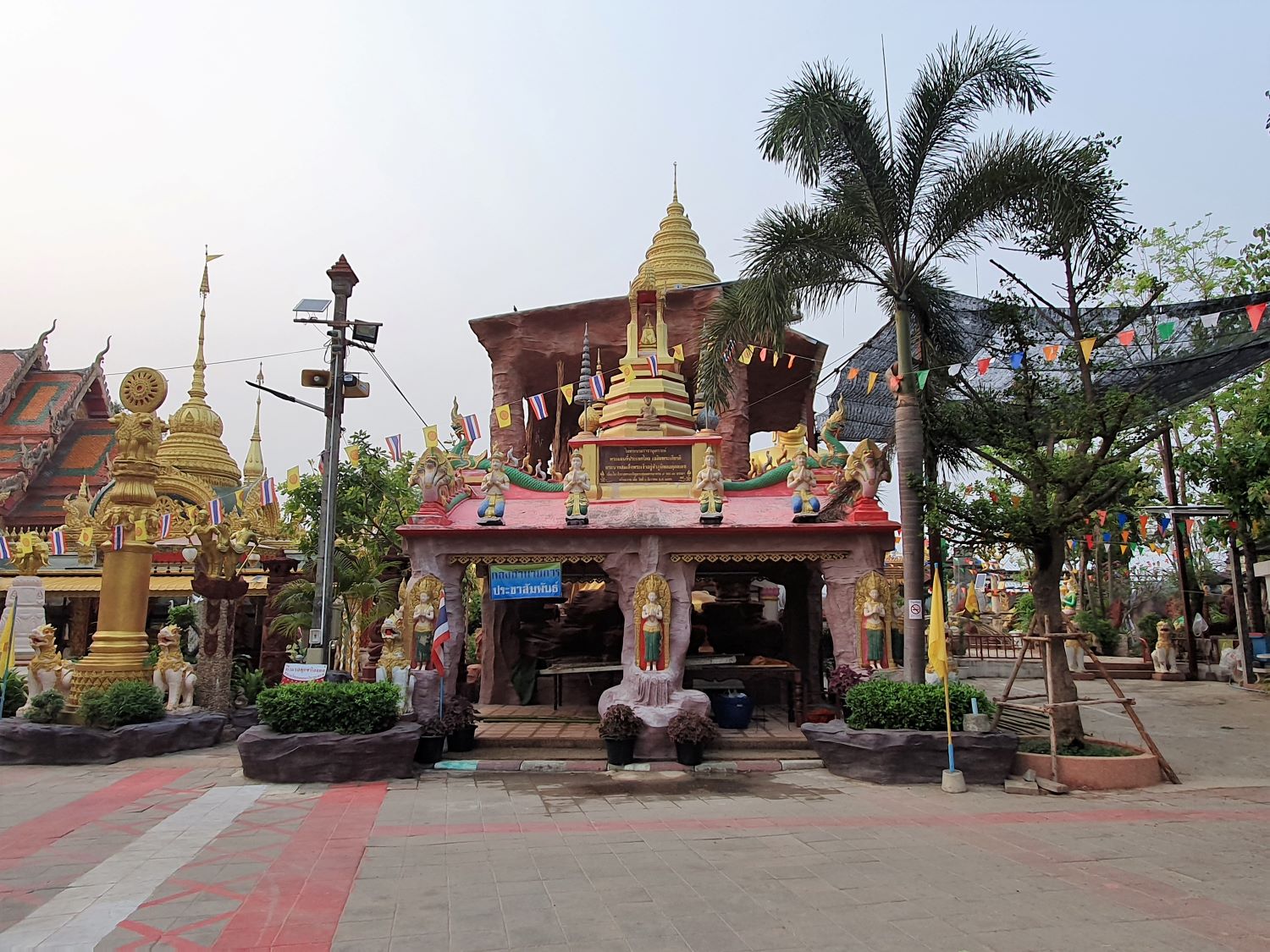
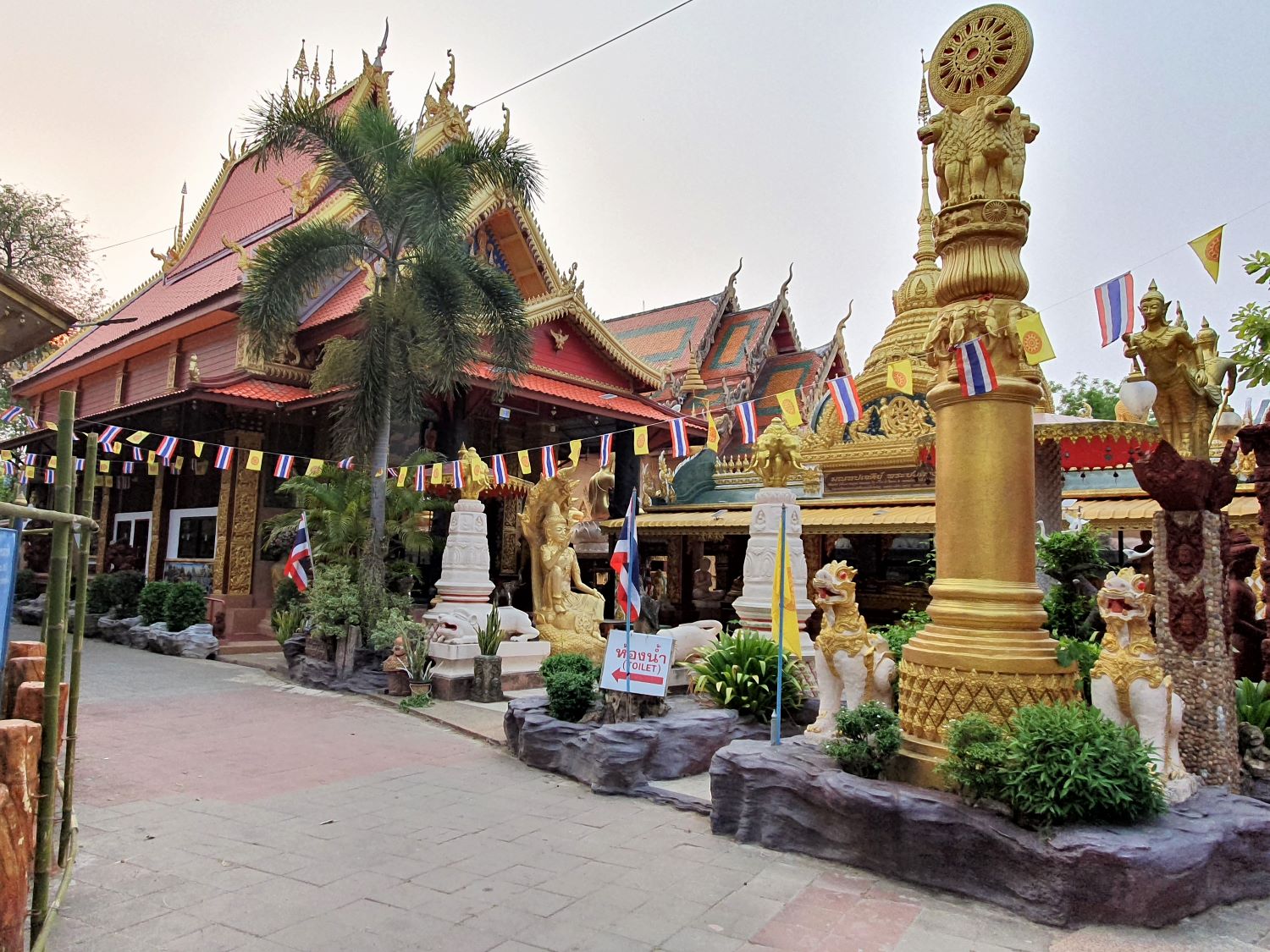
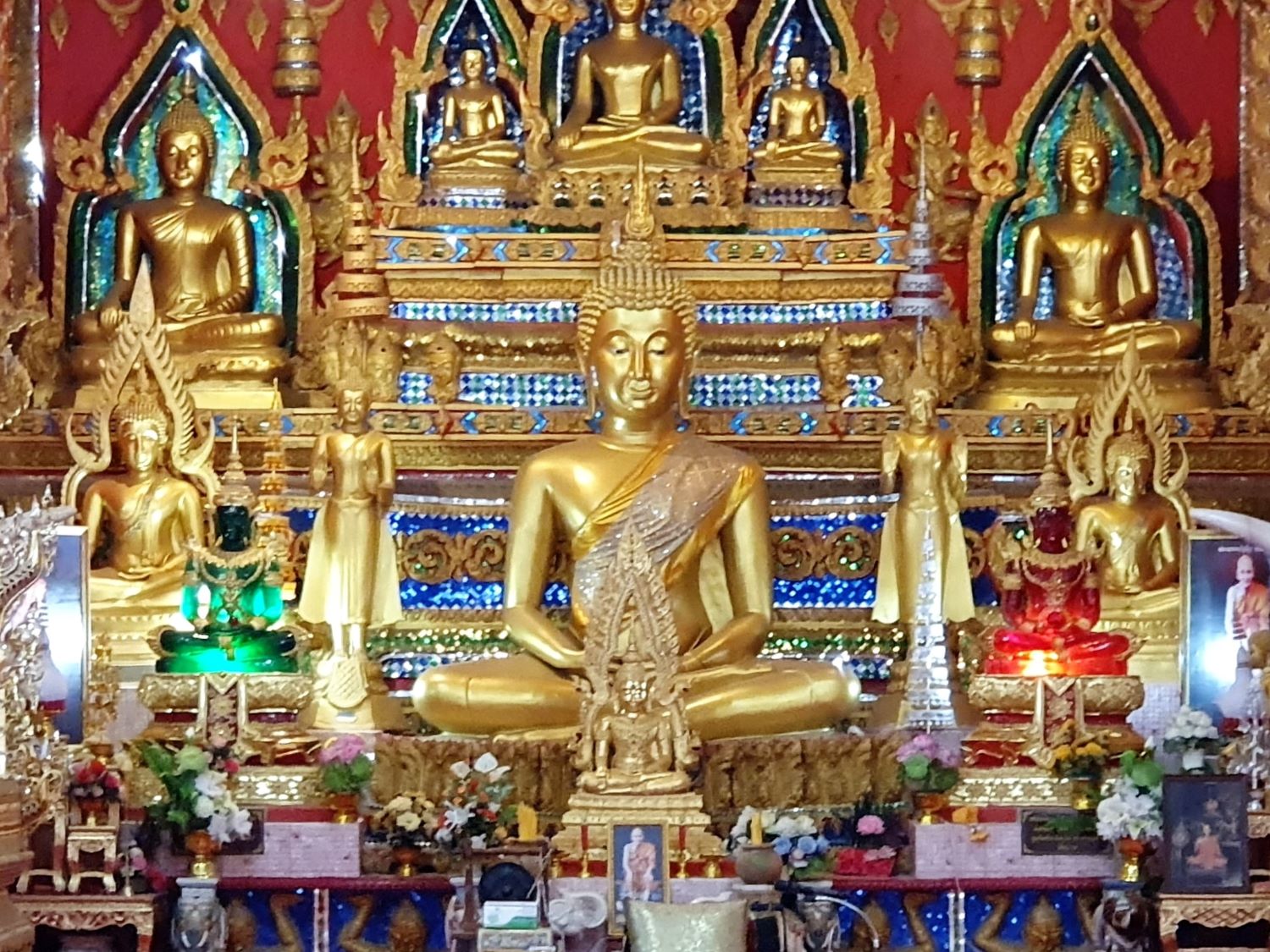
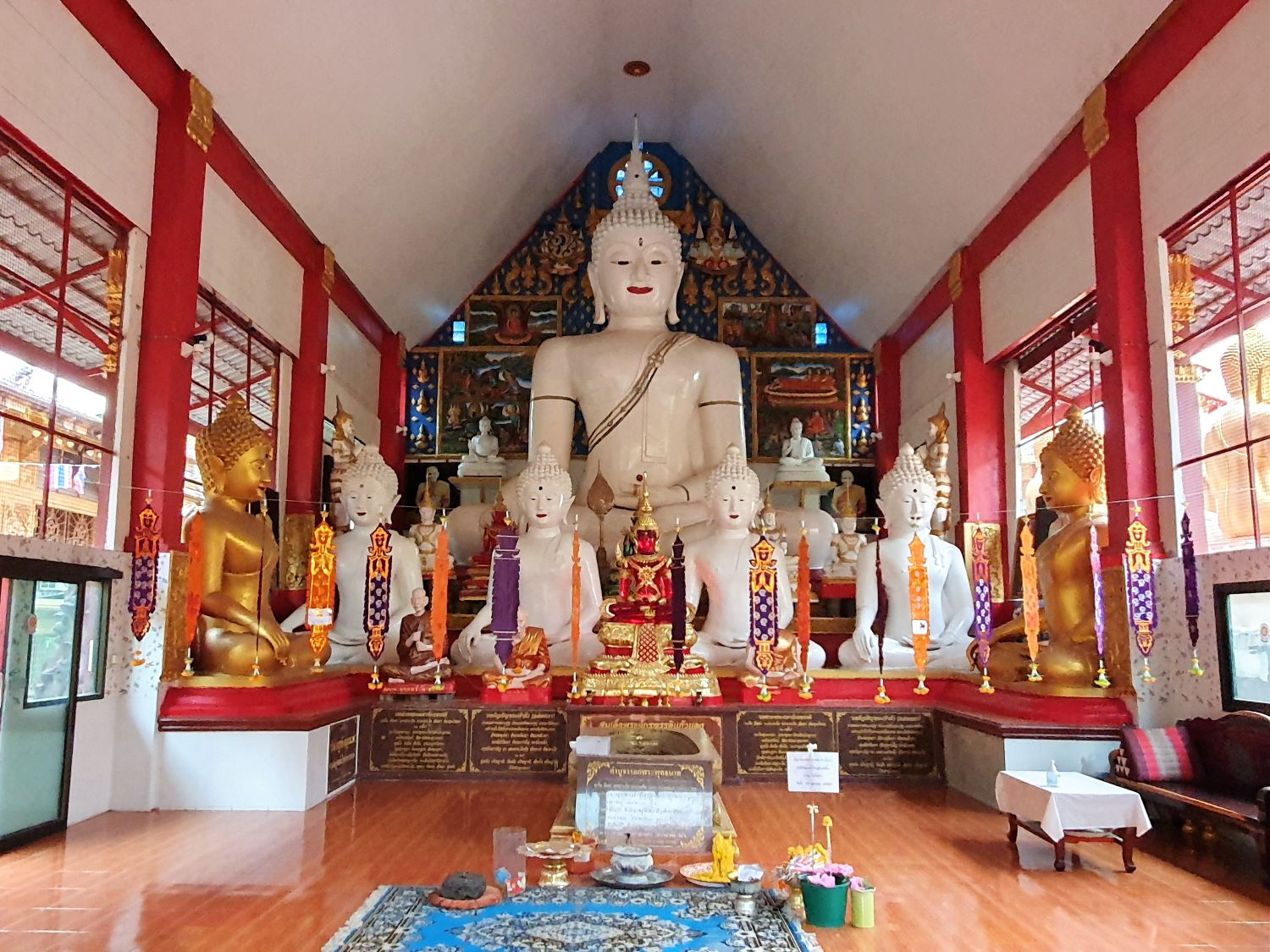
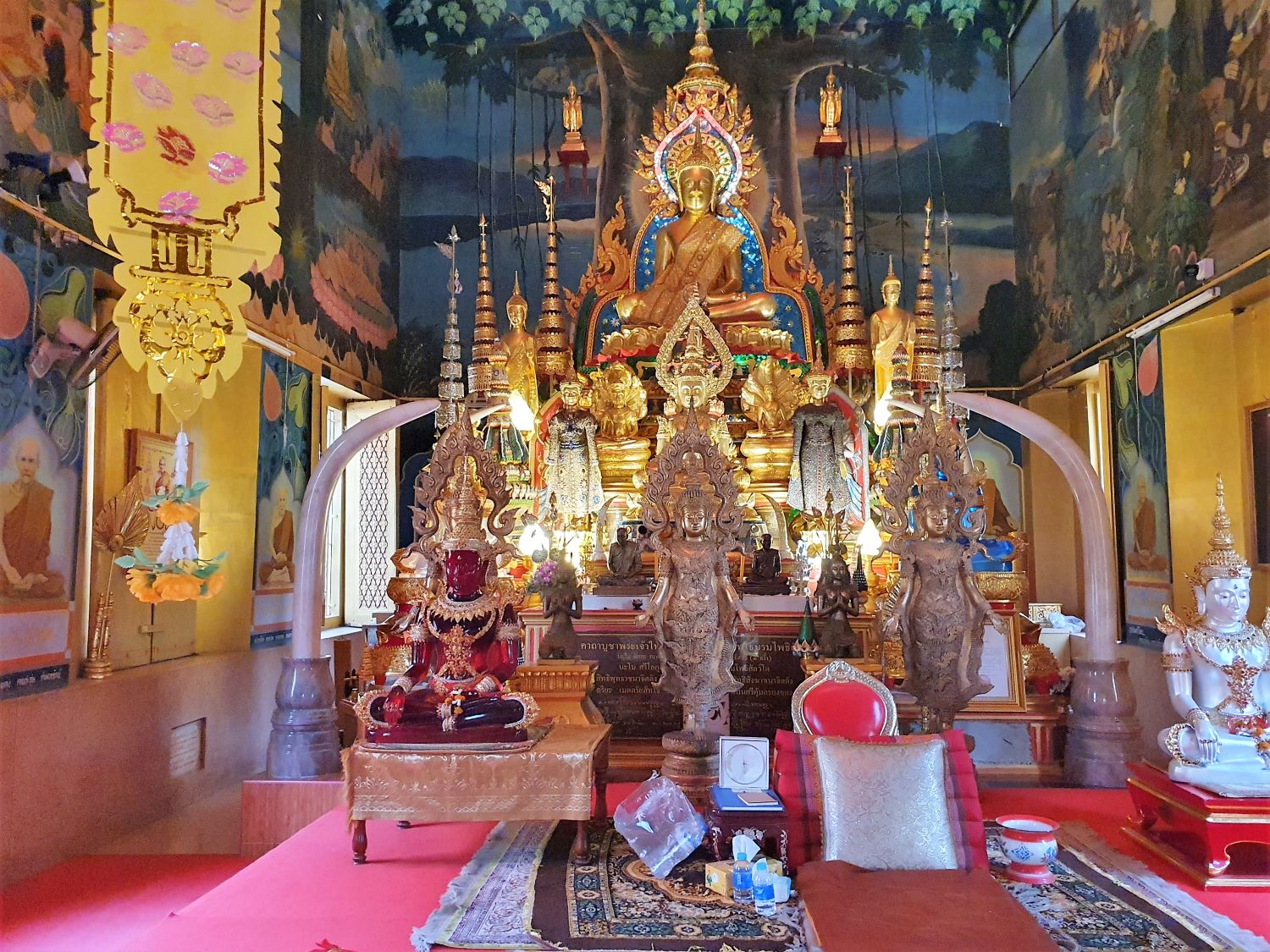
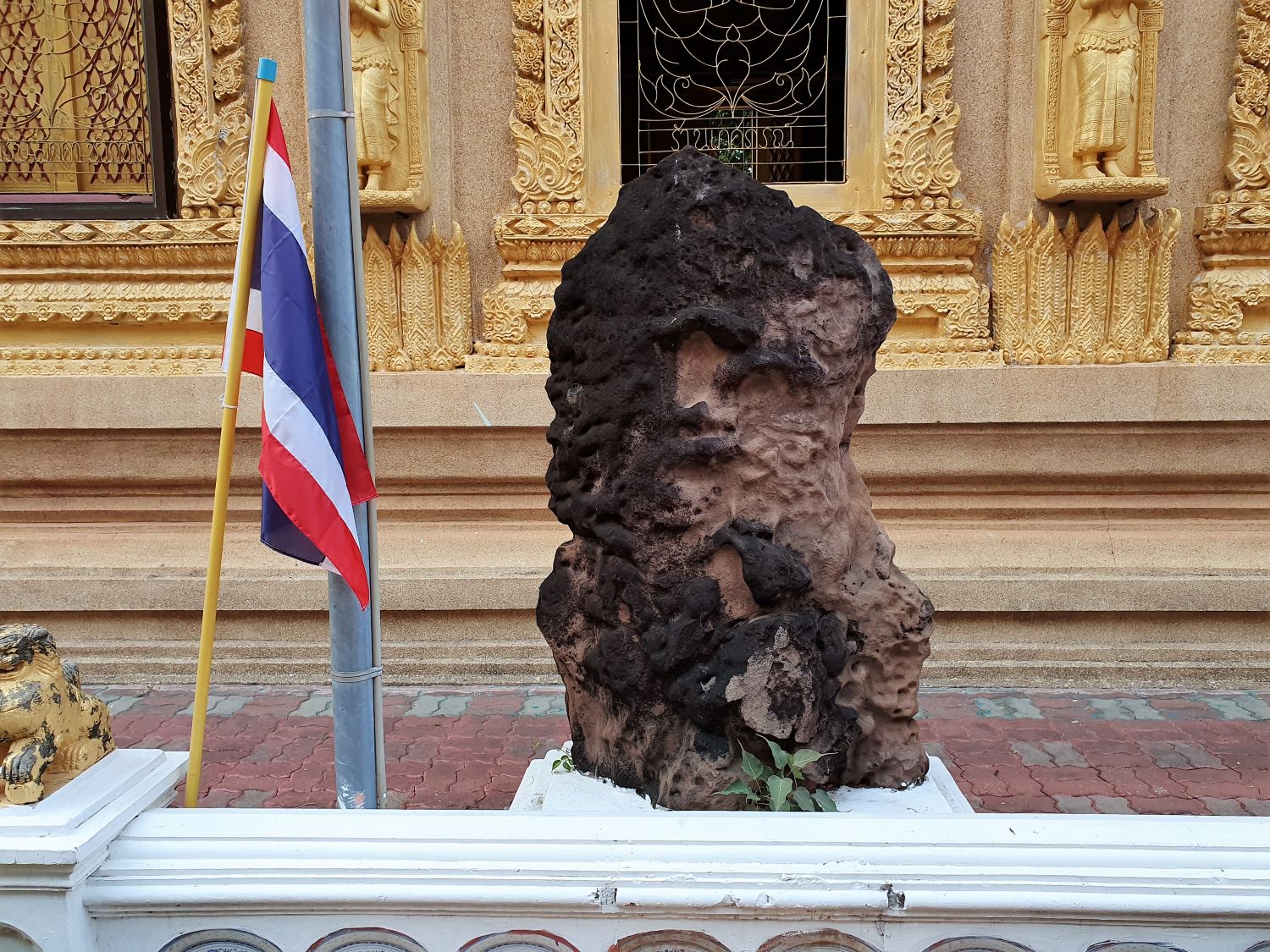
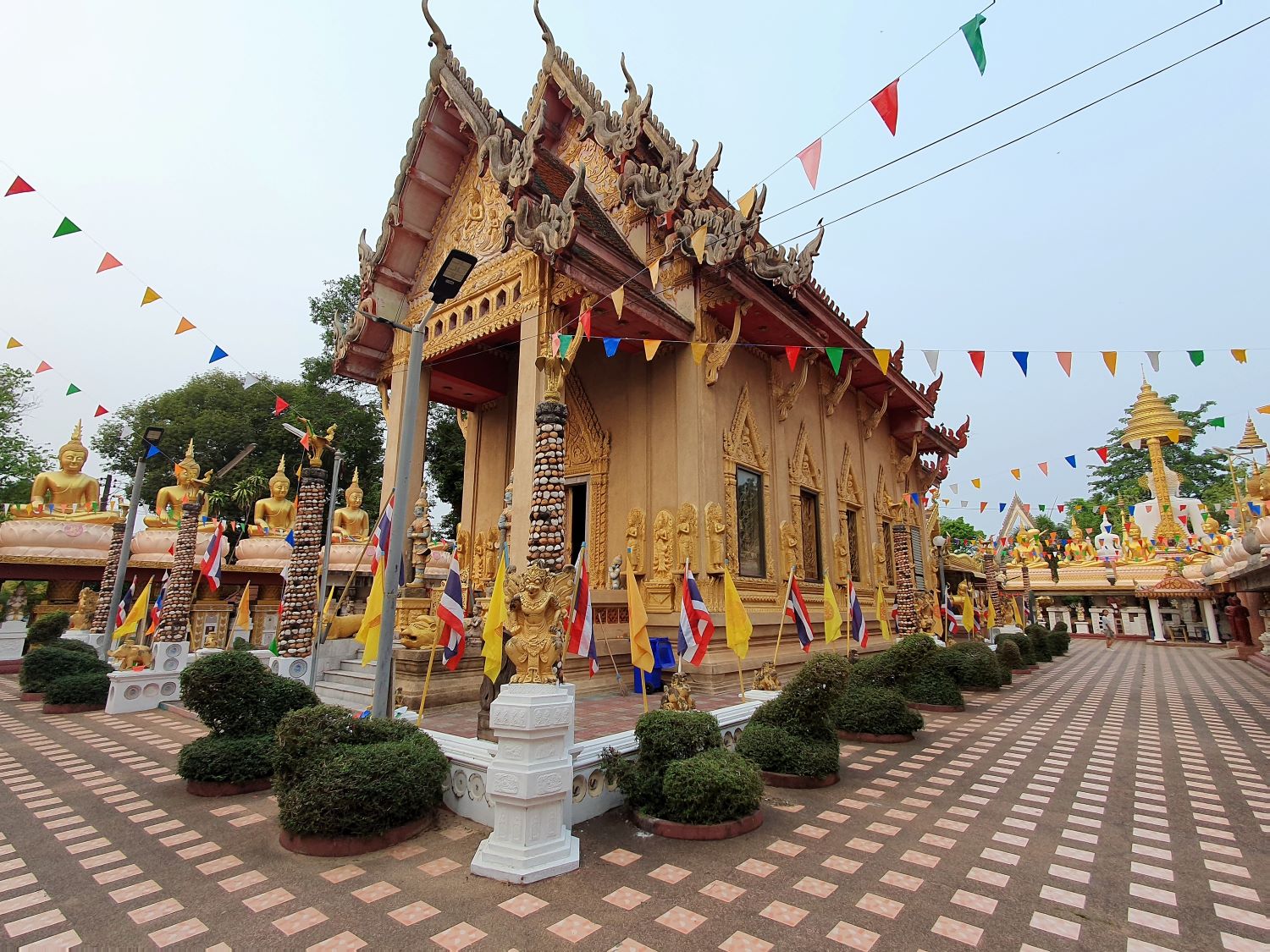
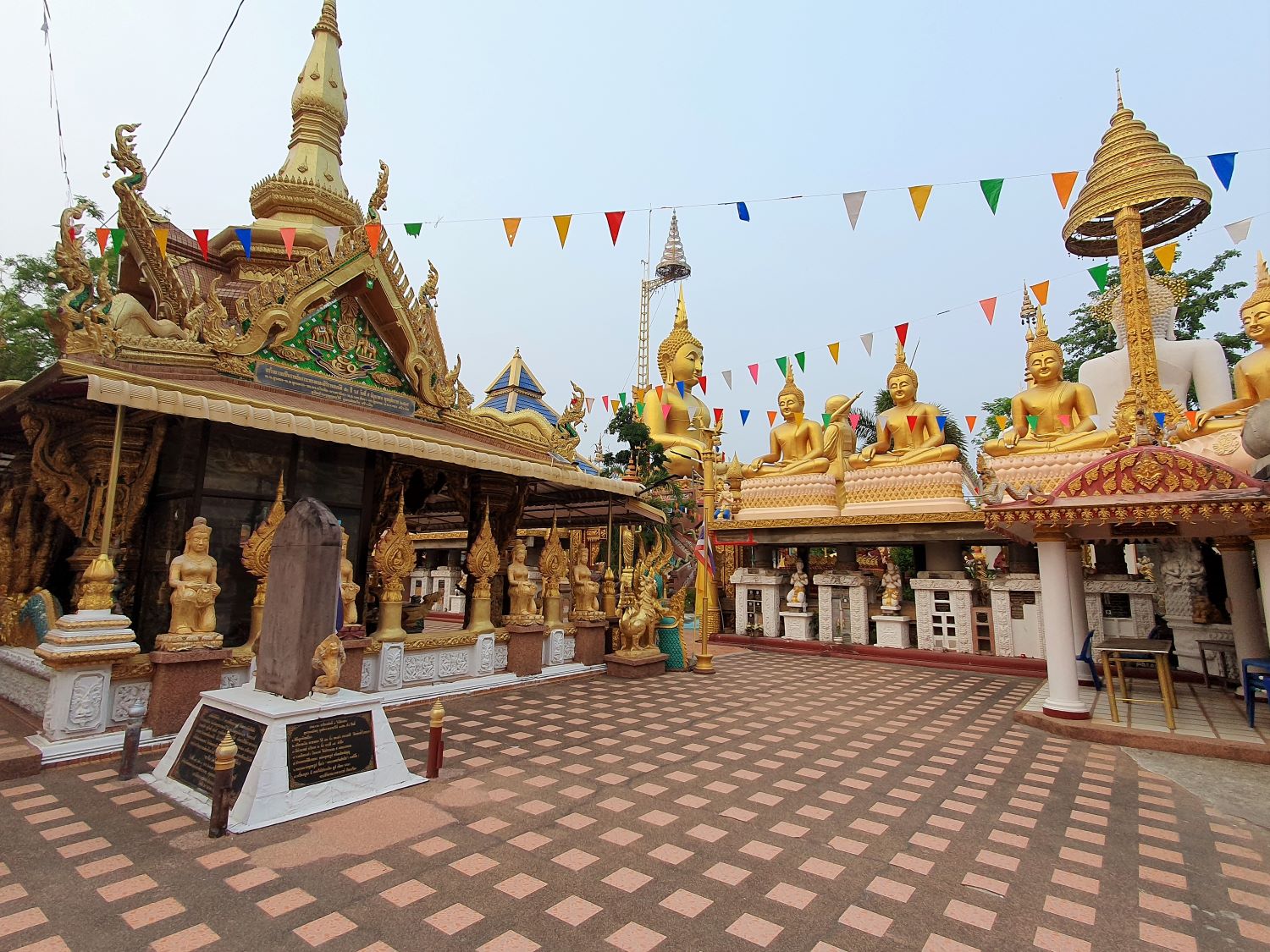
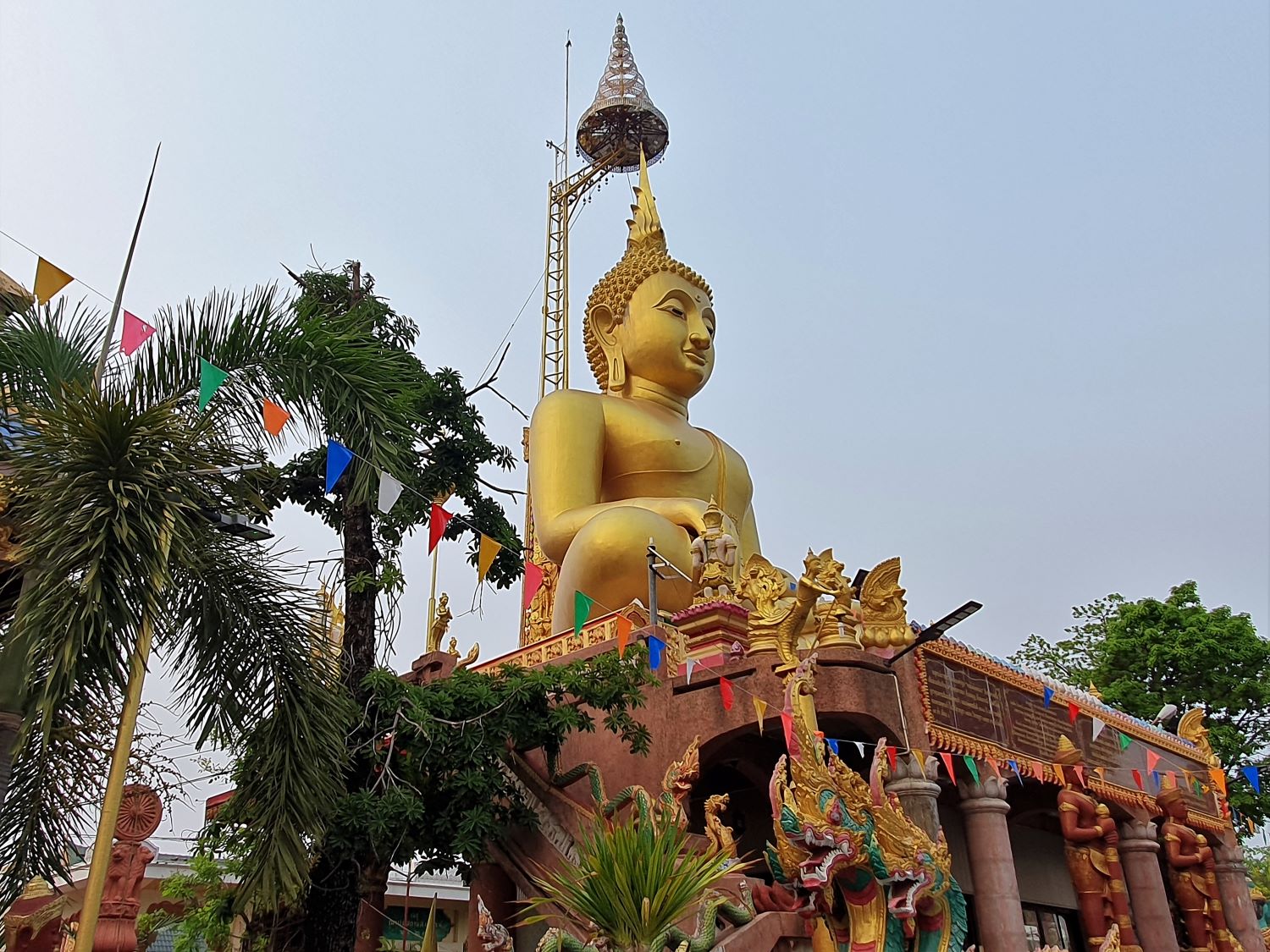
Wat Tai Phra Chao Yai Ong Tue,
Mueang Ubon Ratchathani
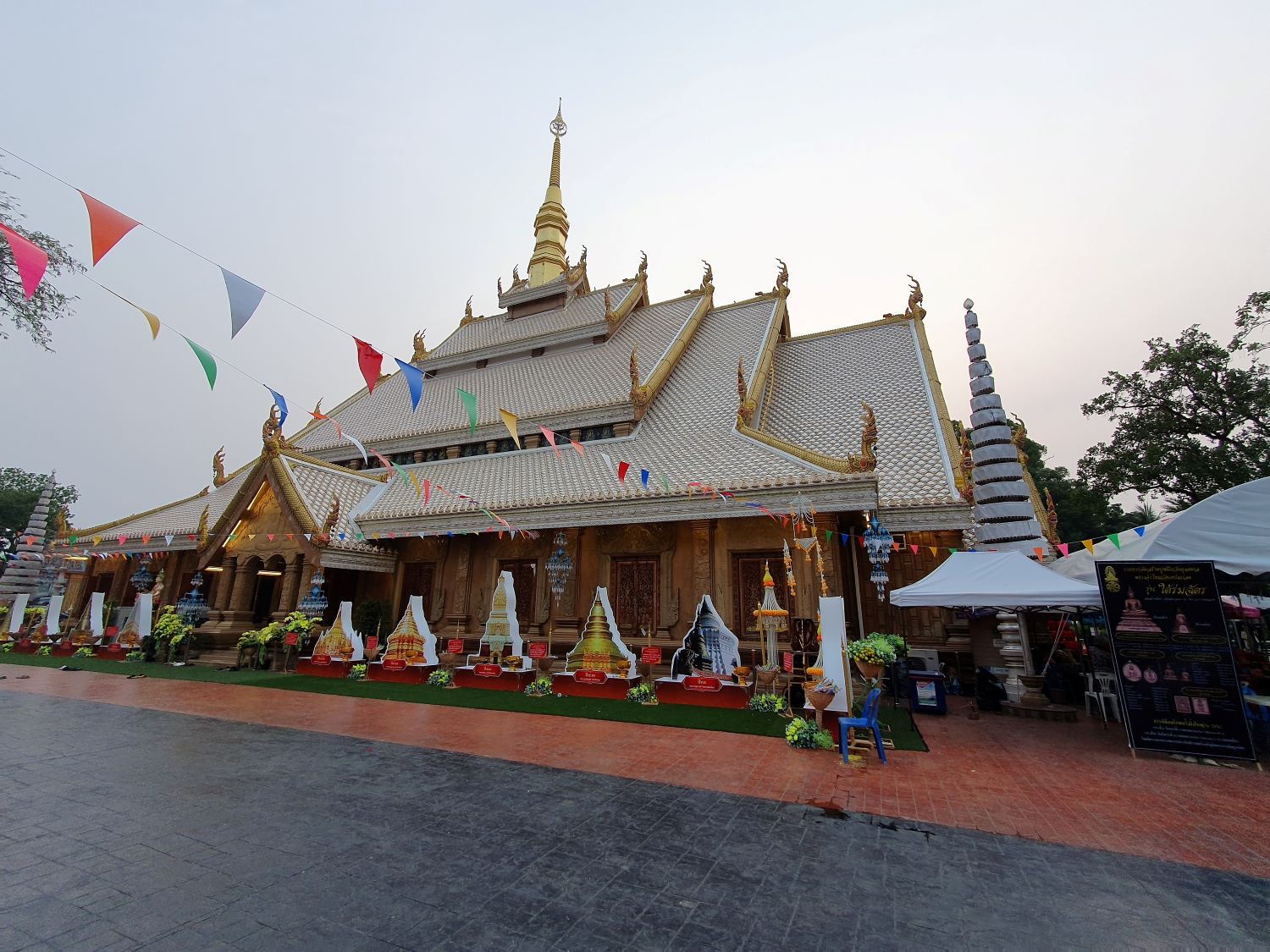
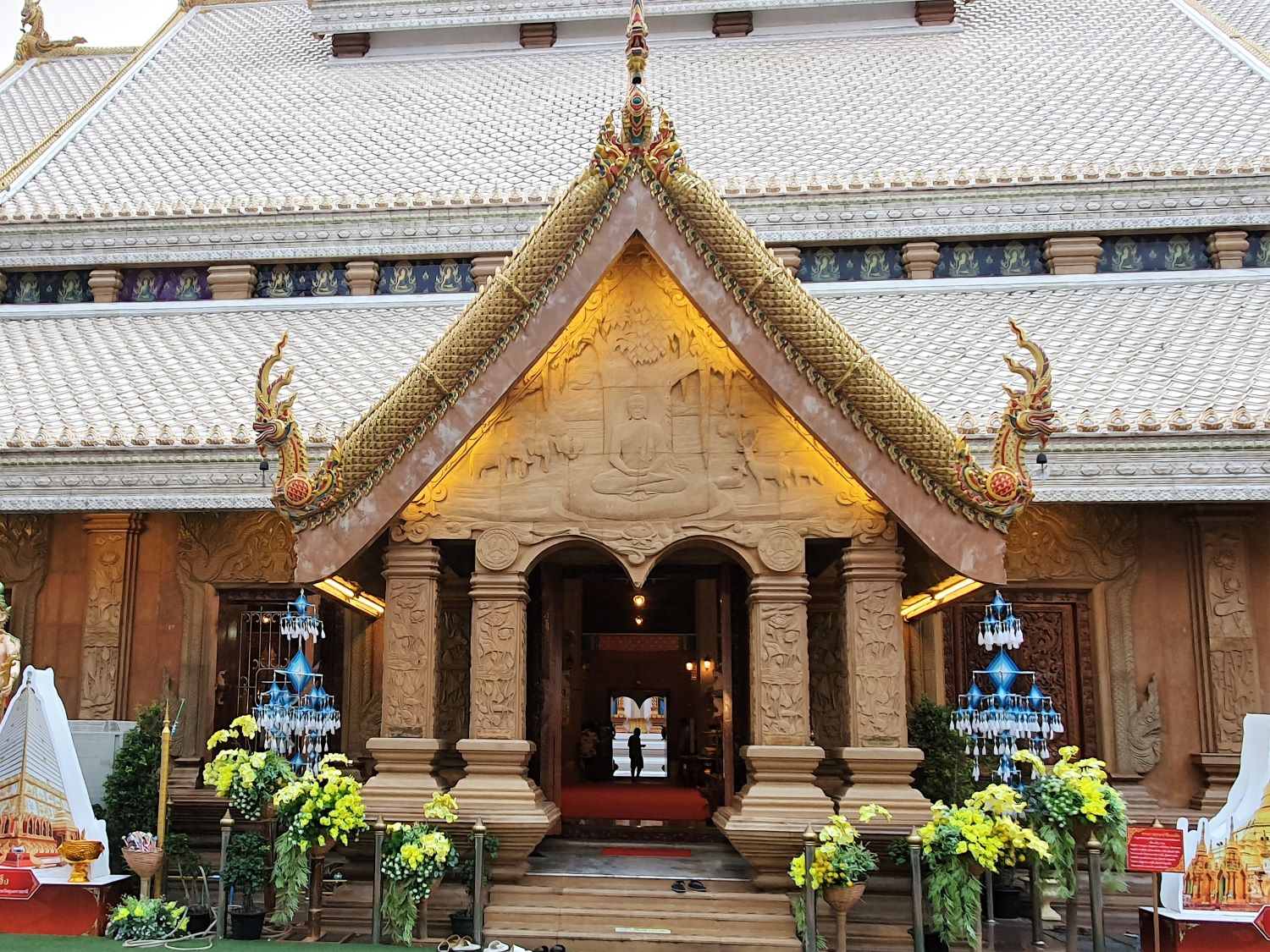
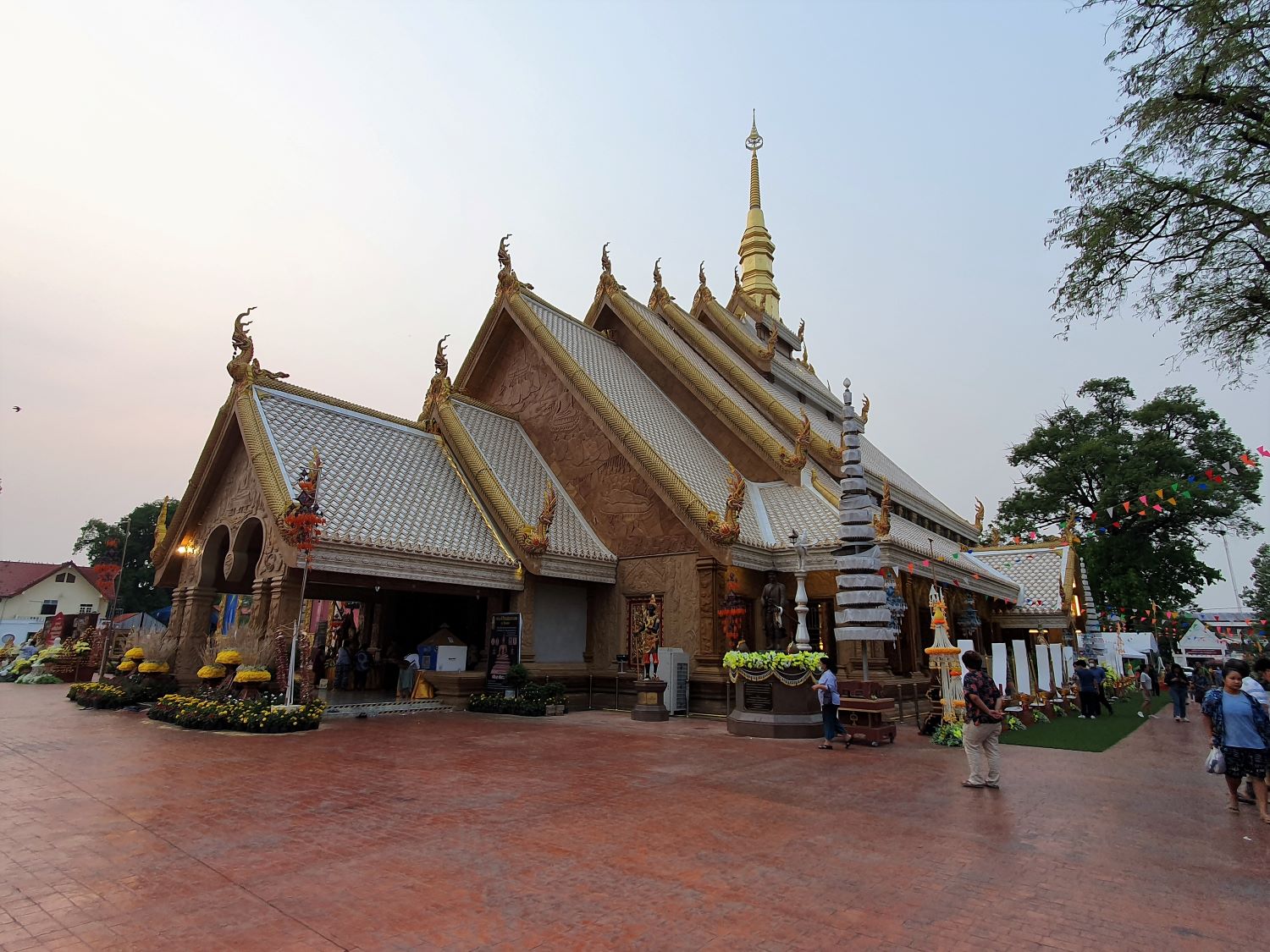
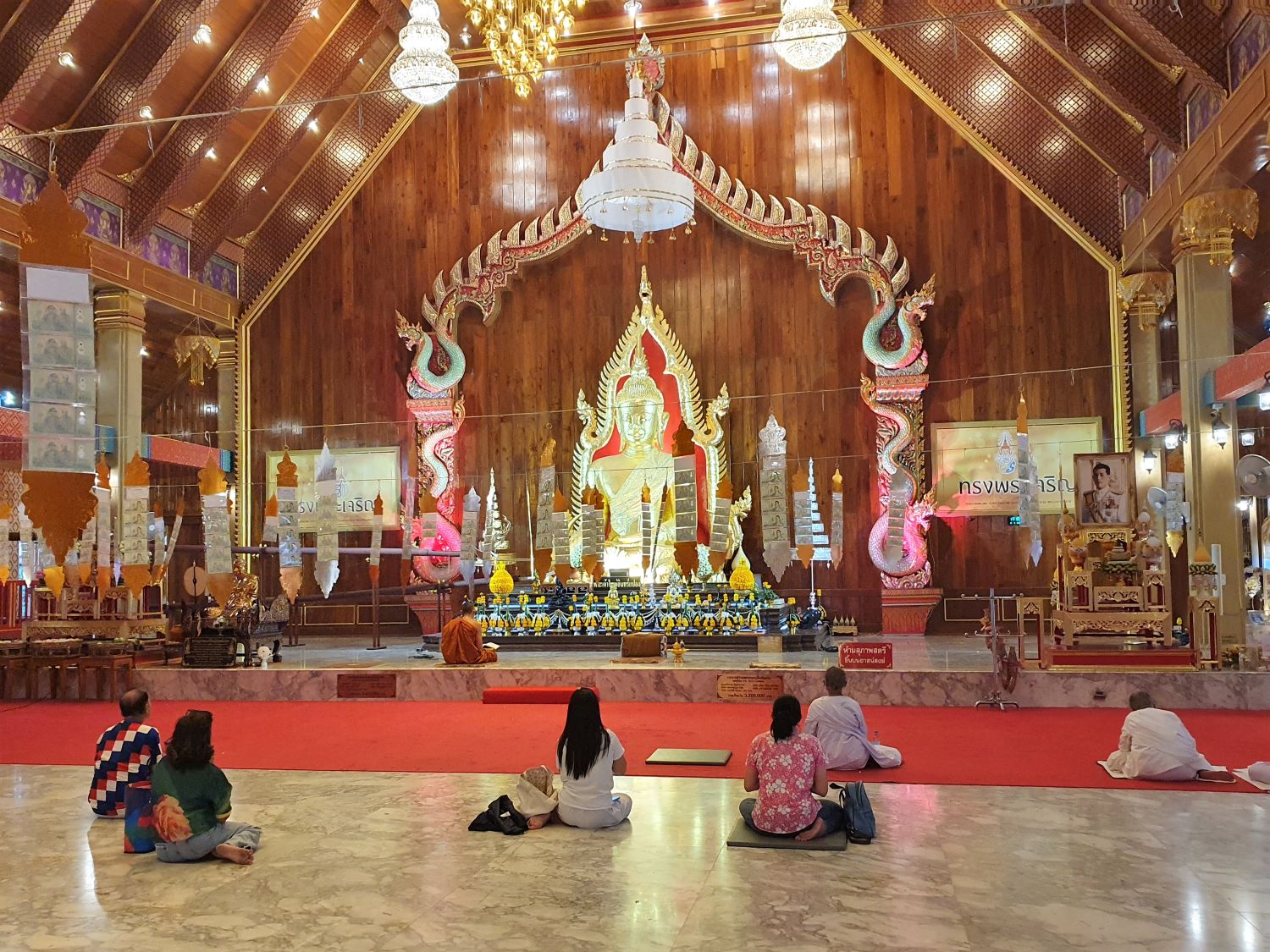
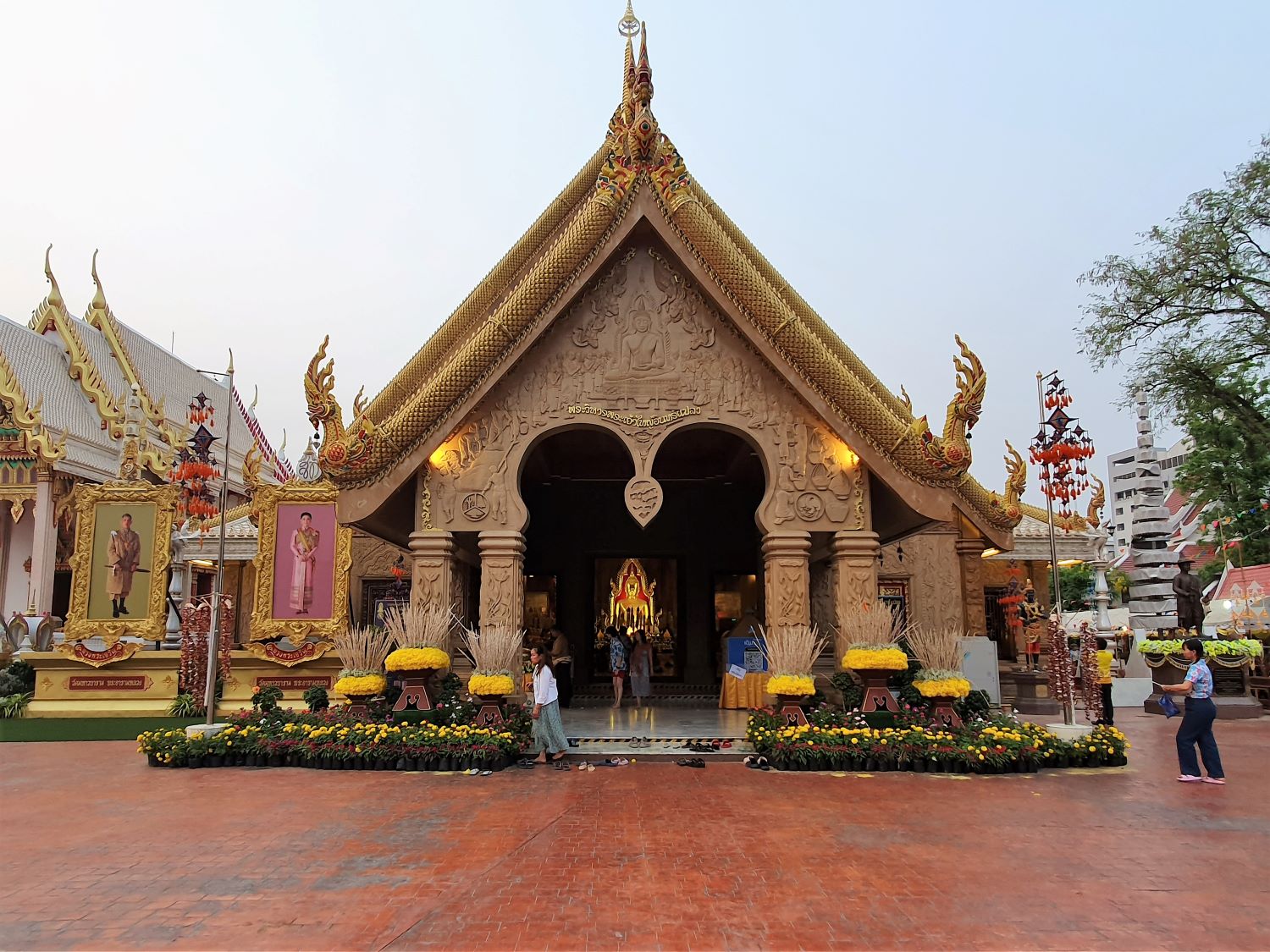
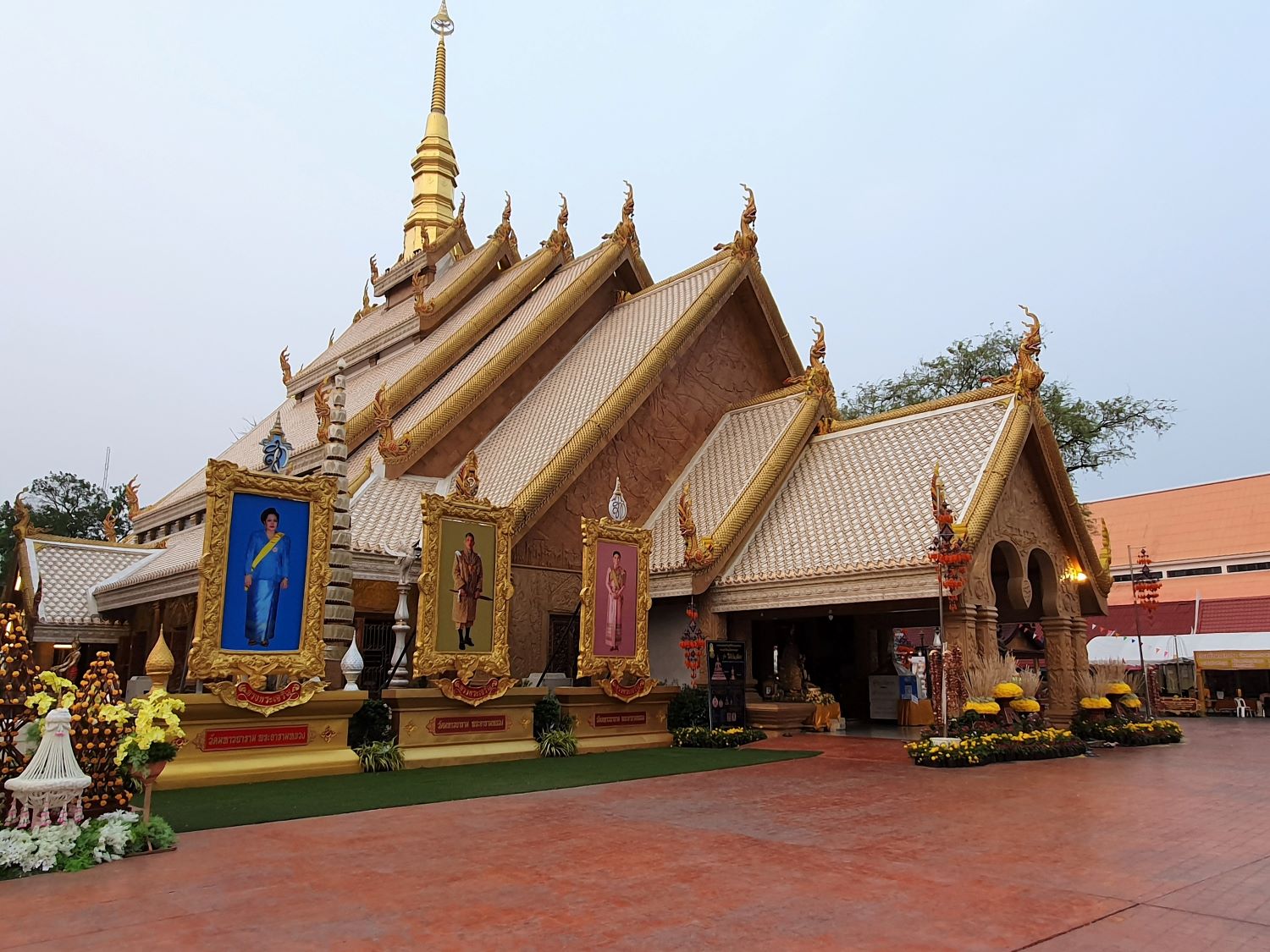
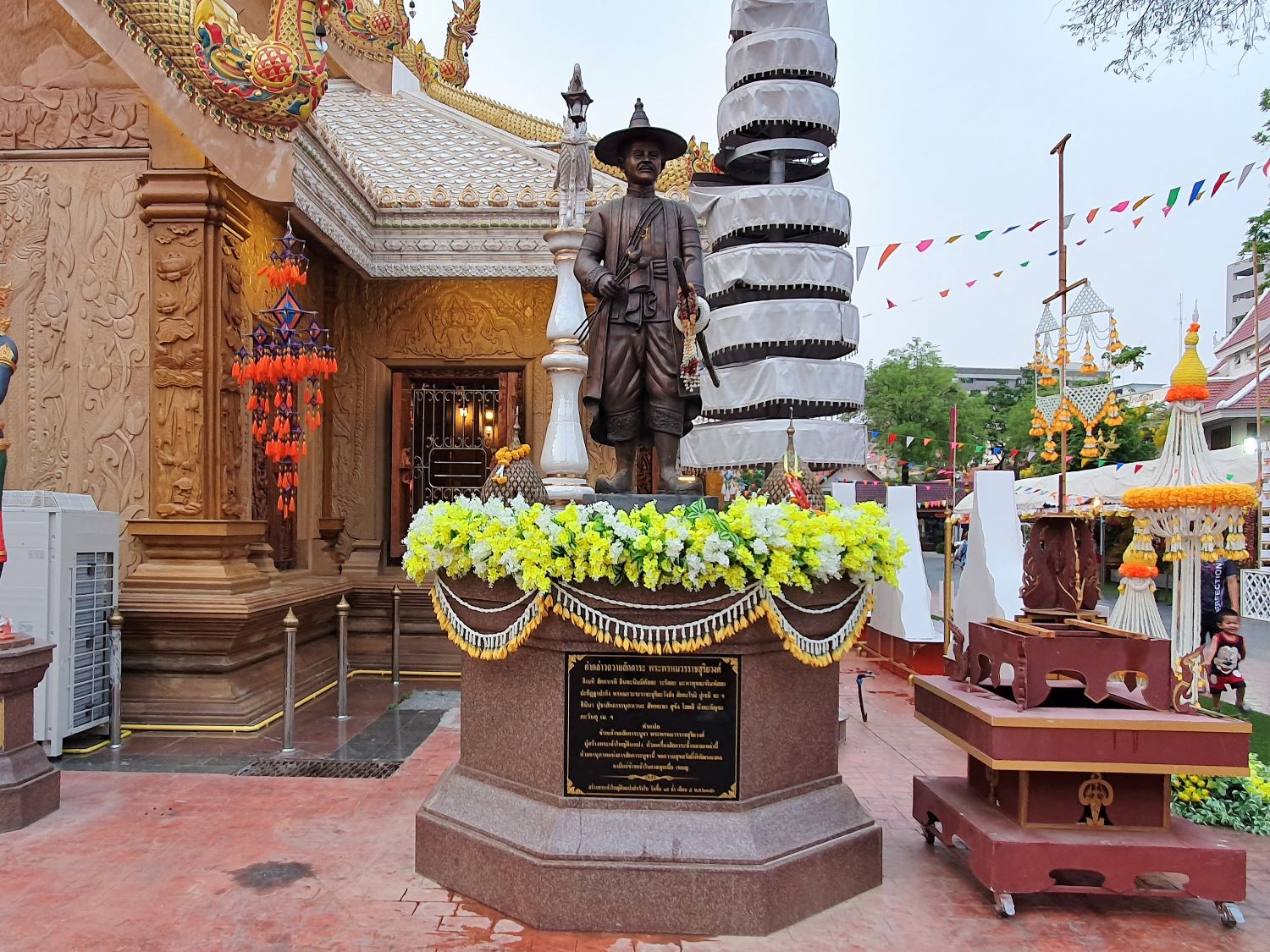
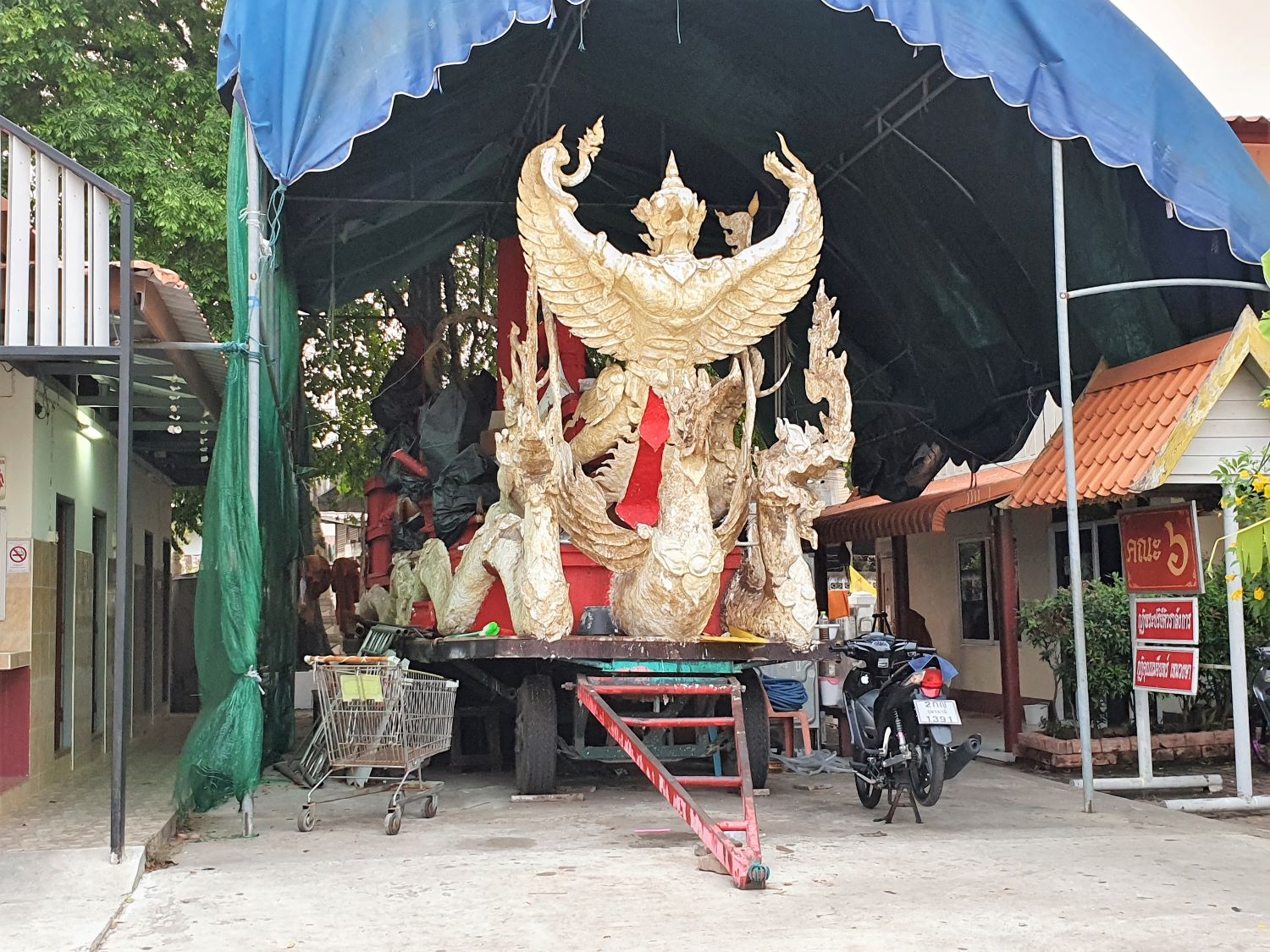
Wat Maha Wararam,
Mueang Ubon Ratchathani
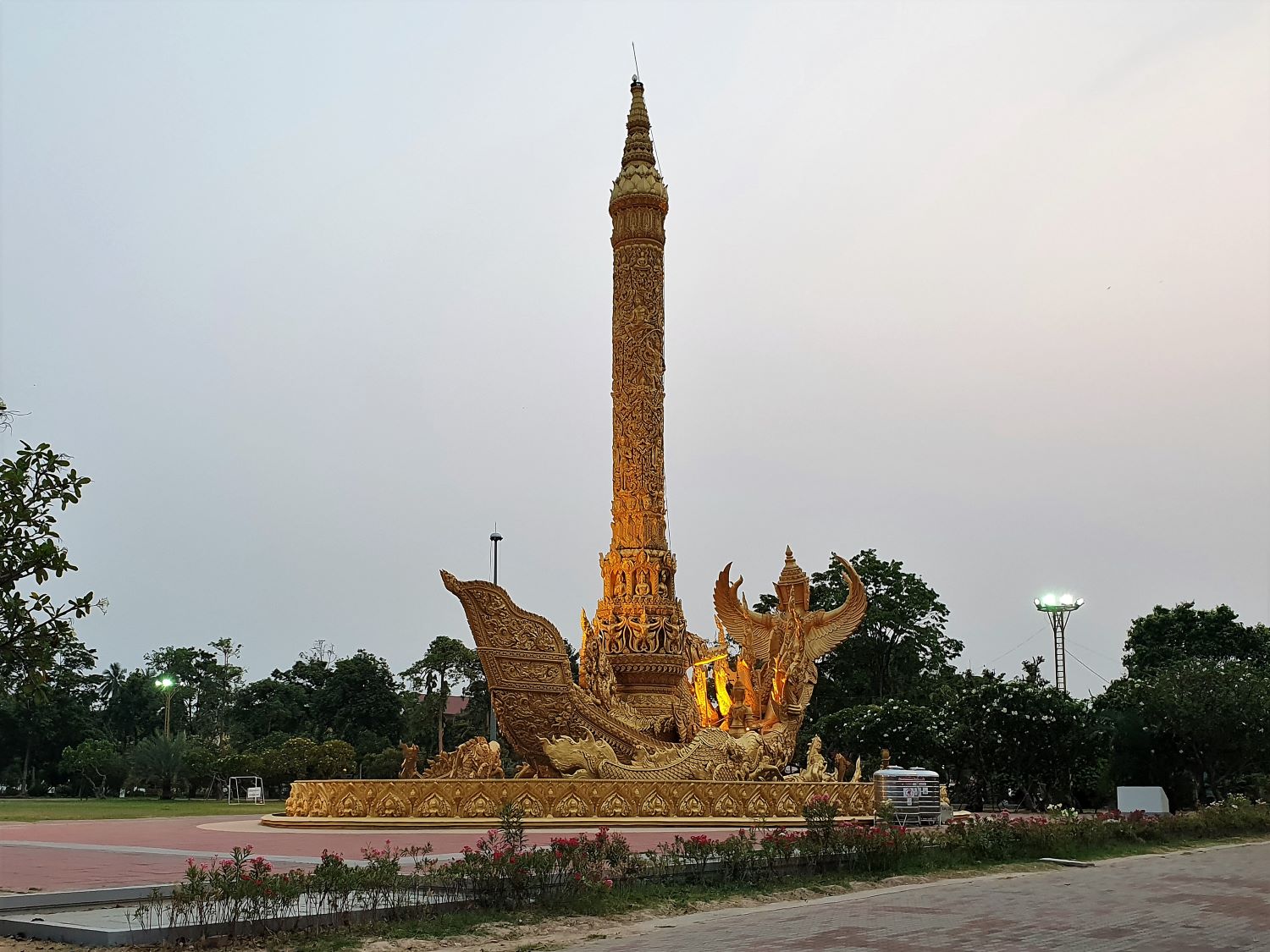
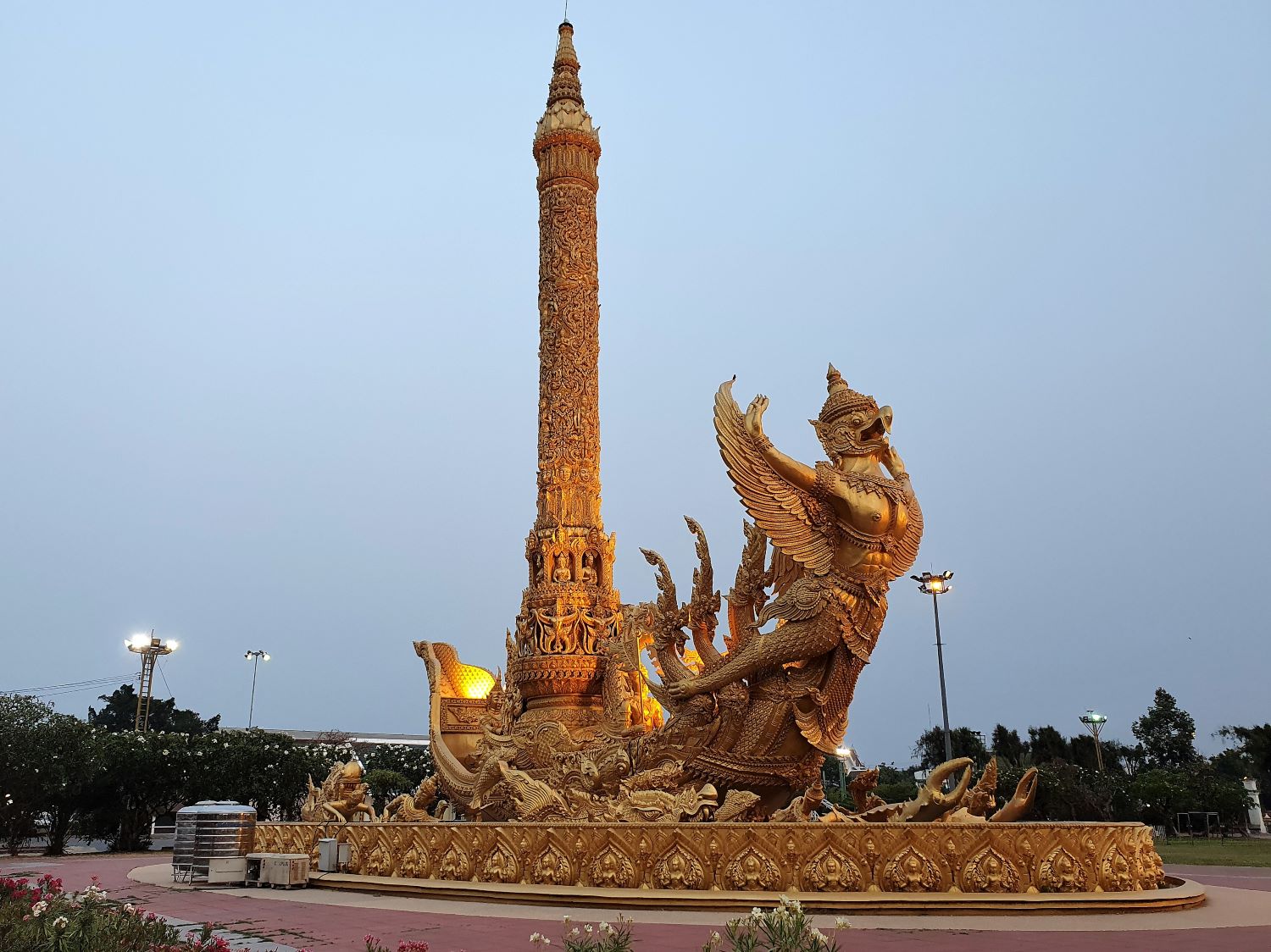
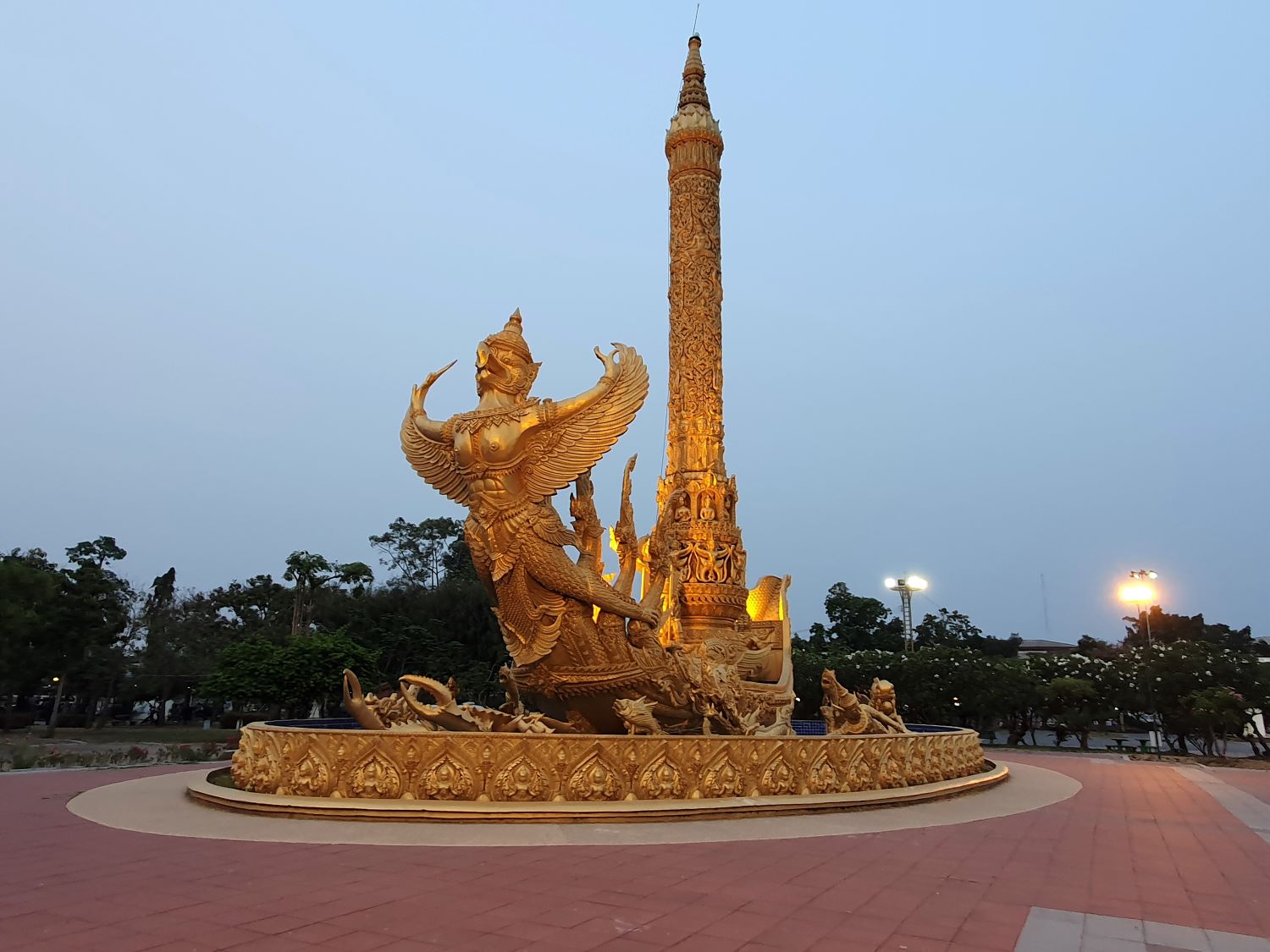
Tung Si Mueang, Mueang Ubon Ratchathani
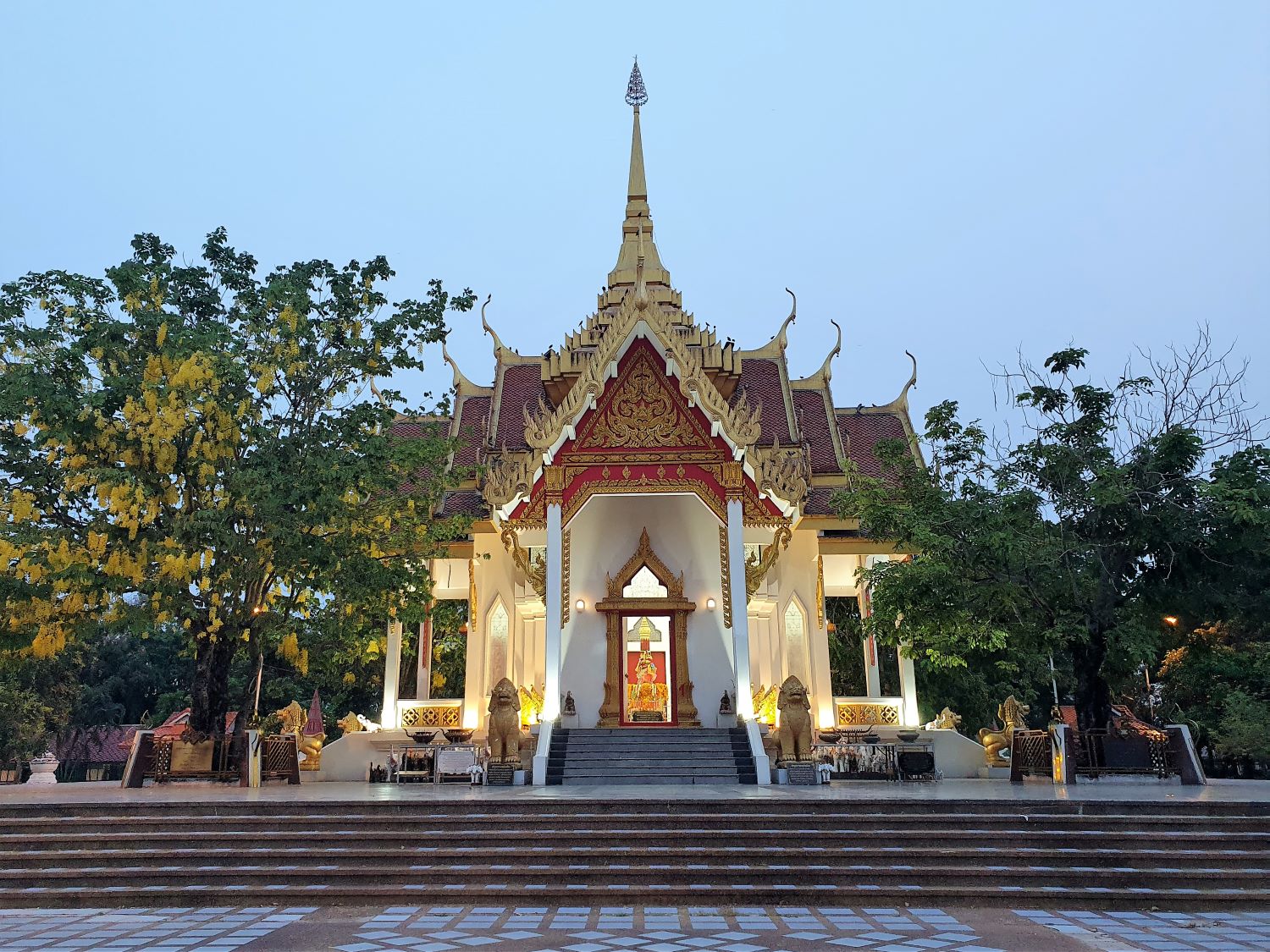
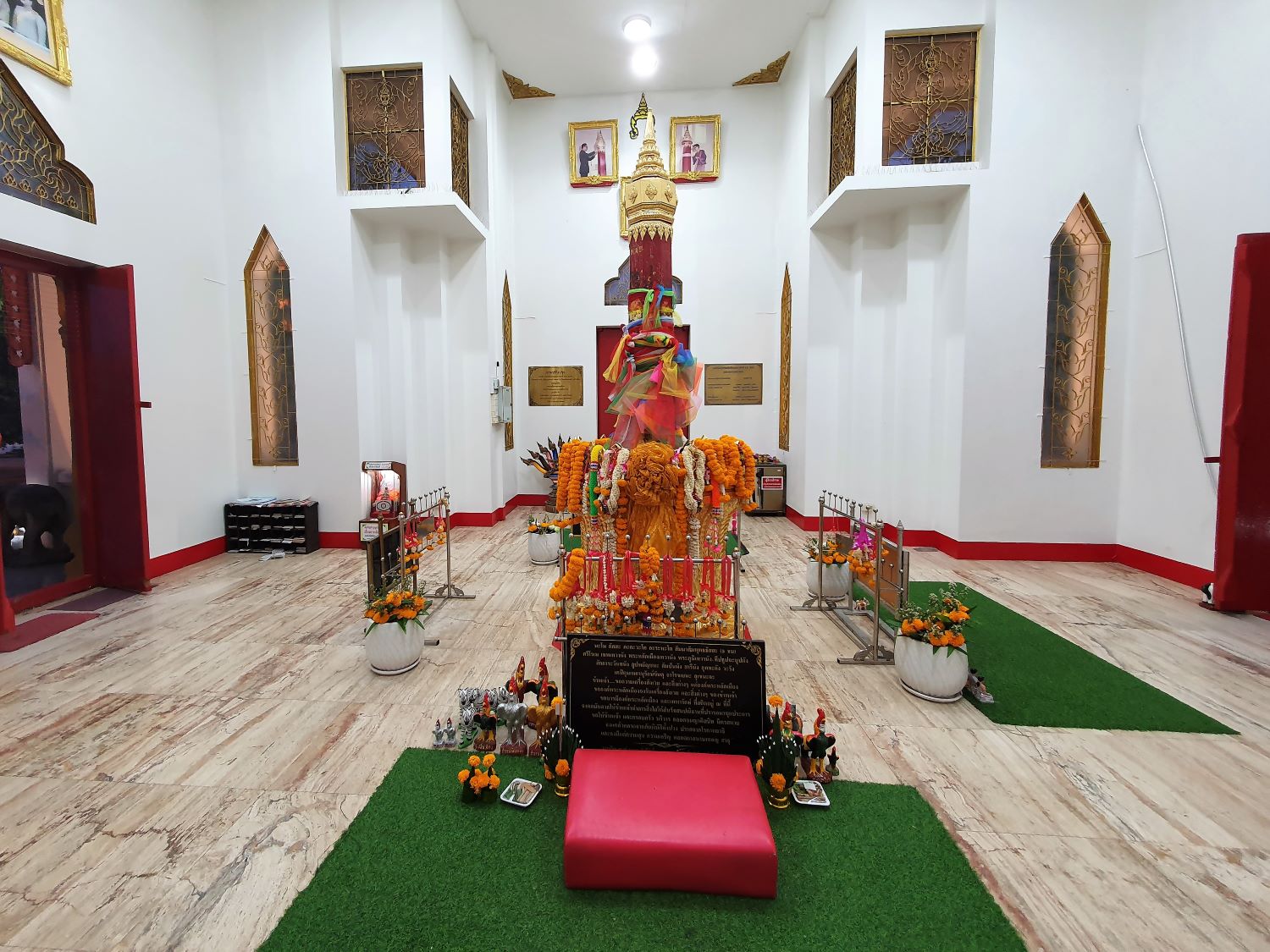
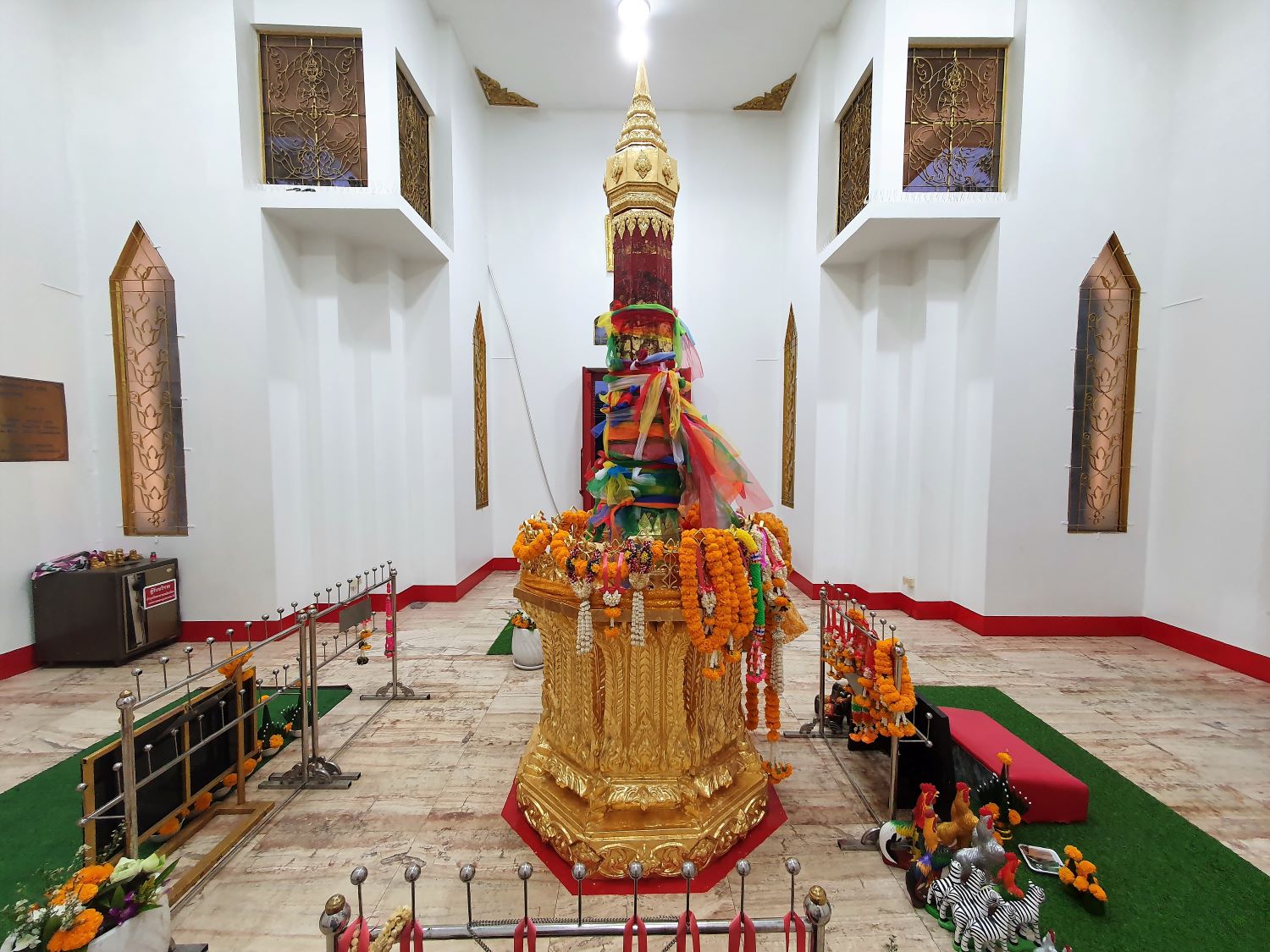
City Pillar Shrine (San Lak Mueang),
Mueang Ubon Ratchathani